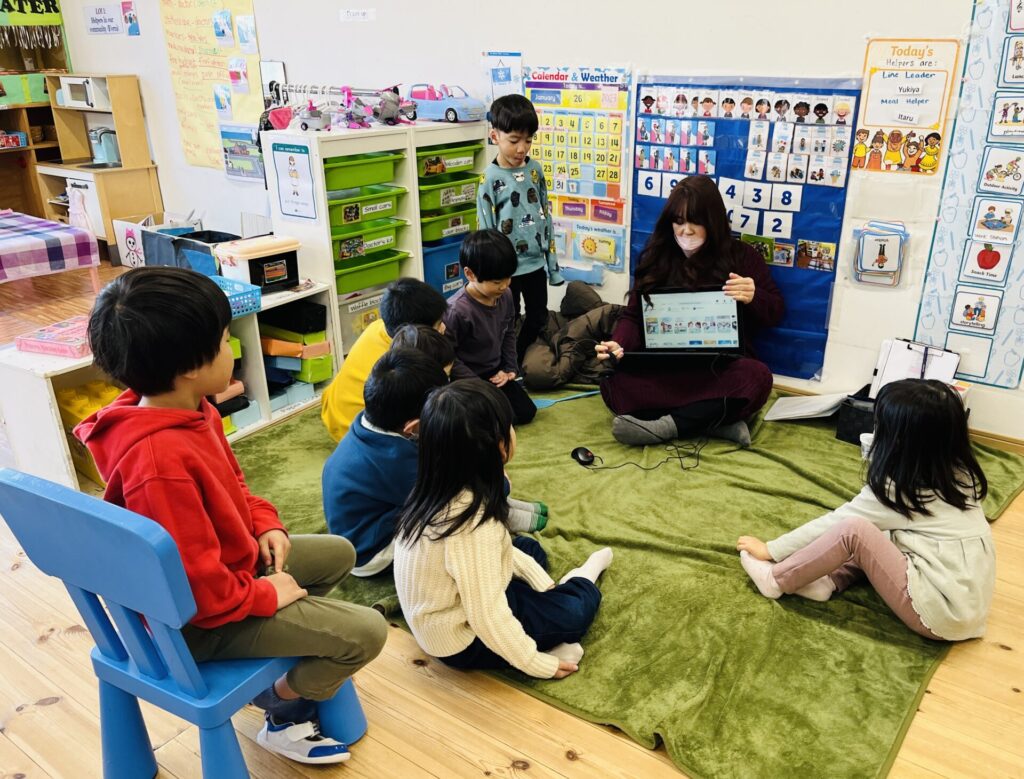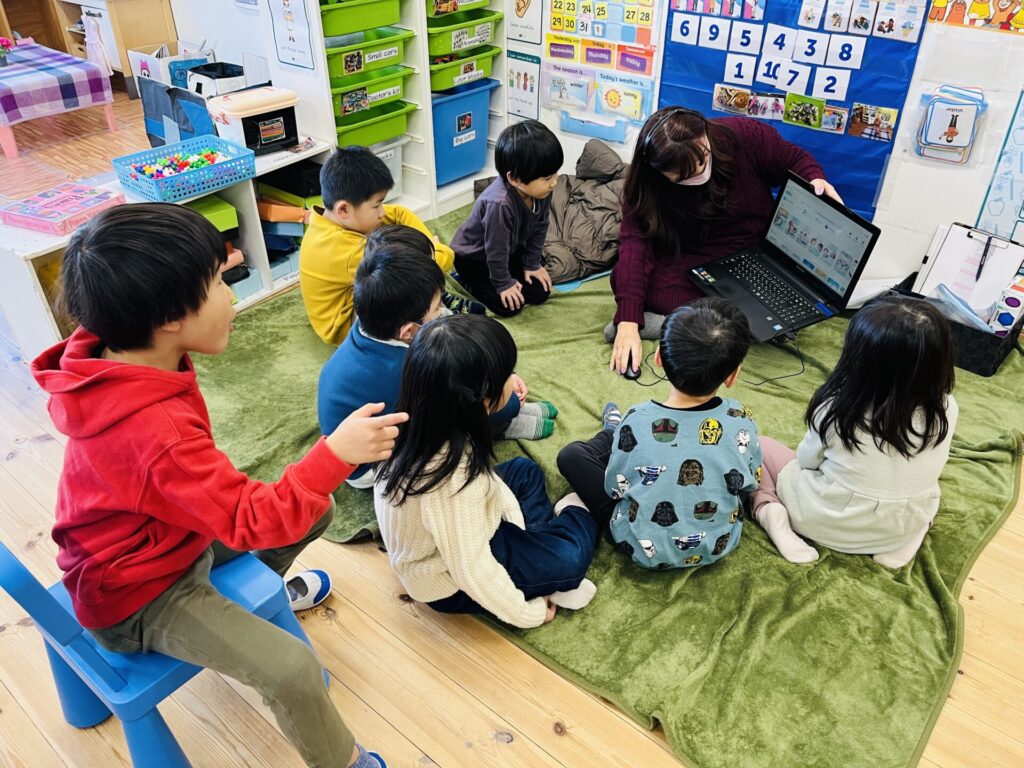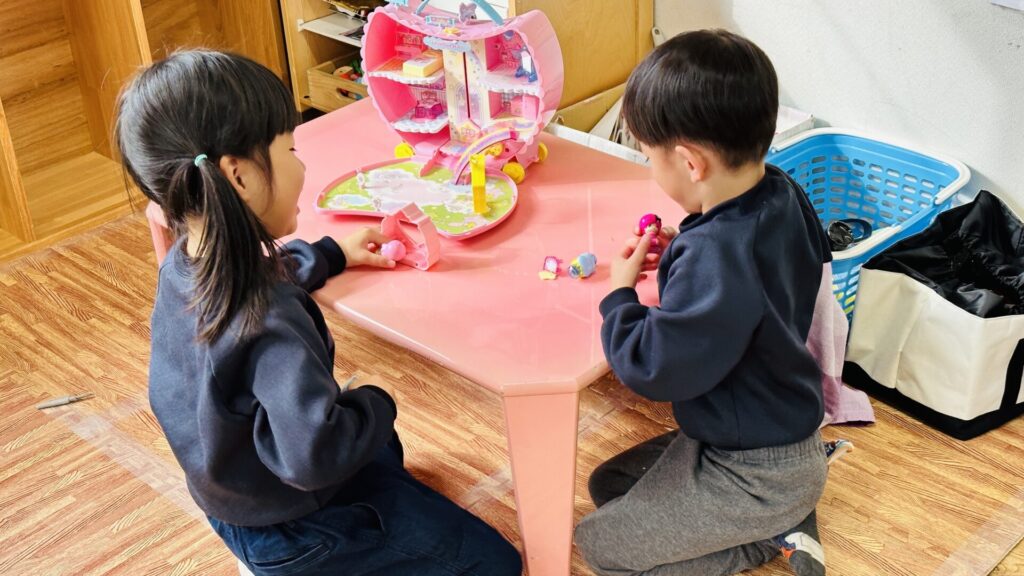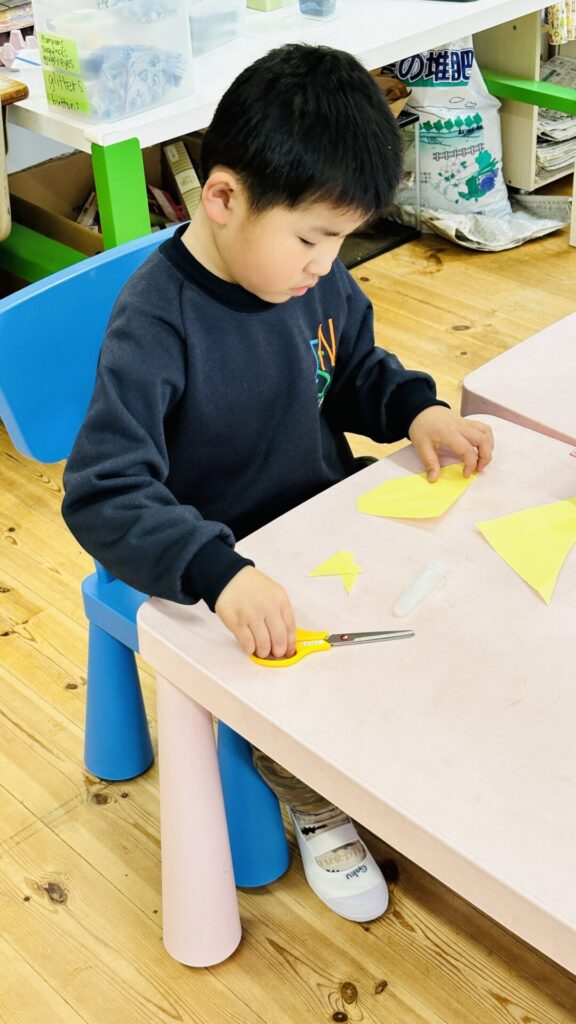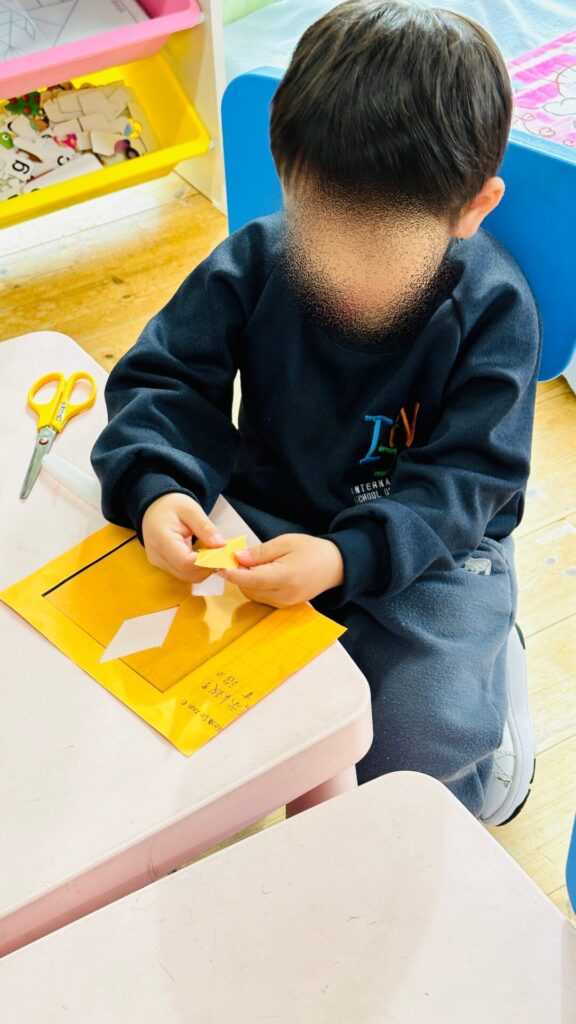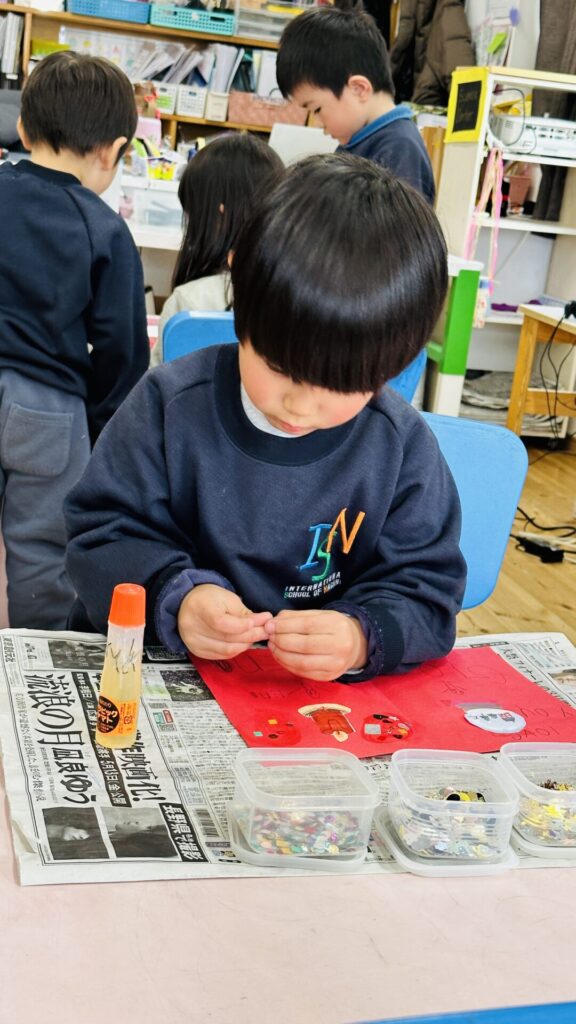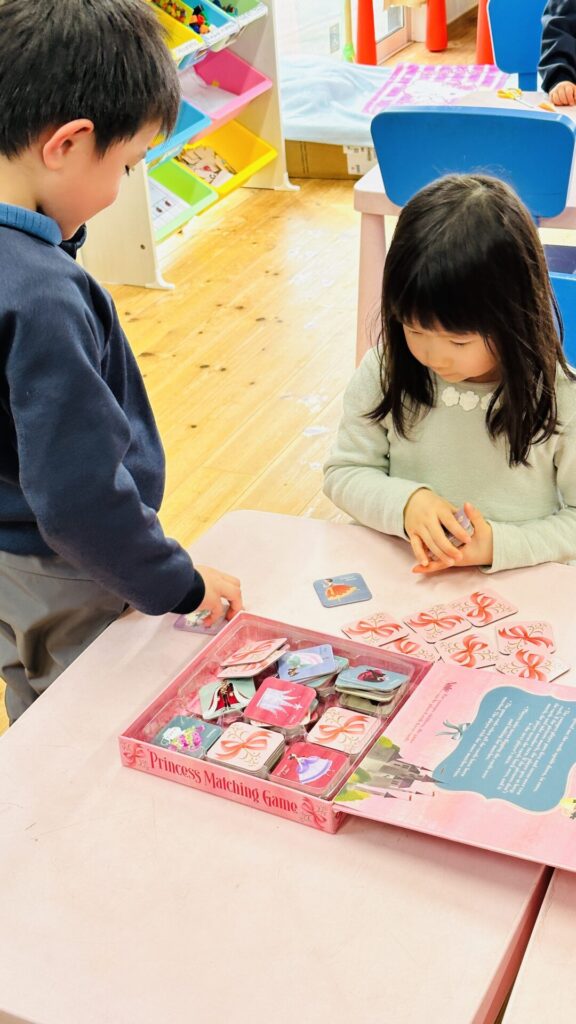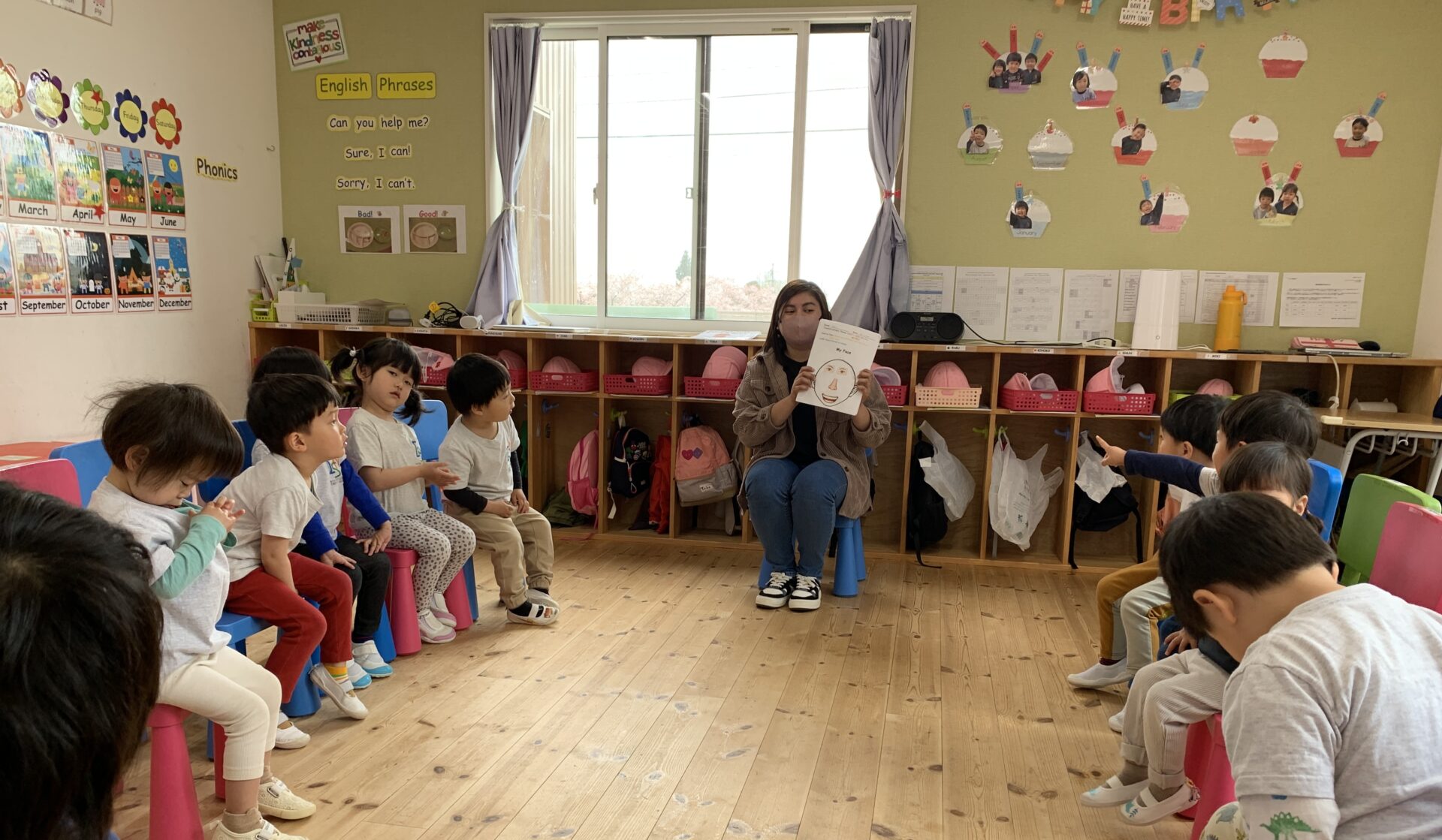Thanks to one of our parents who works as a radiologist came in to share what she does at the hospital. As she shared and described her work, the children’s jaws dropped! Looking at those images and pictures, we were amazed and the children looked and listened with undivided attention. Thank you so much for coming and sharing your stethoscopes with us! You have deepened the children’s understanding about this special community helper!
ありがたいことに、クラスのお友達のお母さんがレントゲンのスペシャリスト(放射線科医)だったのでゲストスピーカーに来ていただき、お医者さんが病院でどんな仕事をしているのかを見せていただきました。レントゲンの写真を見たり、人間の体の仕組みを聞いている子ども達はとても集中していて、興味津々でした。最後に聴診器を使わせてもらい、お友達や自分の心臓の音を聞きました。素敵なプレゼンテーションをありがとうございました!おかげで子ども達のコミュニティヘルパーについての探究心と理解力が深まりました!

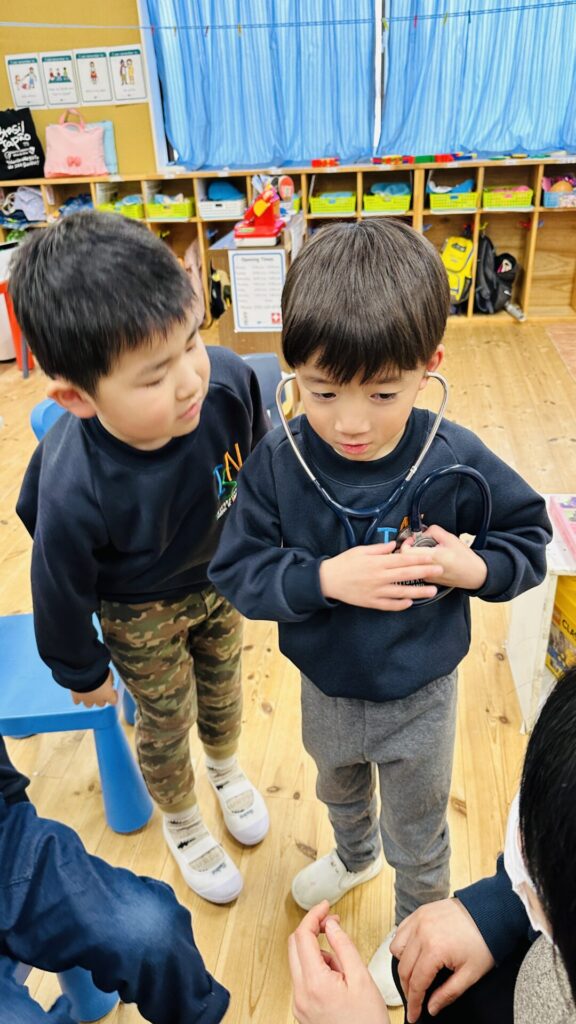
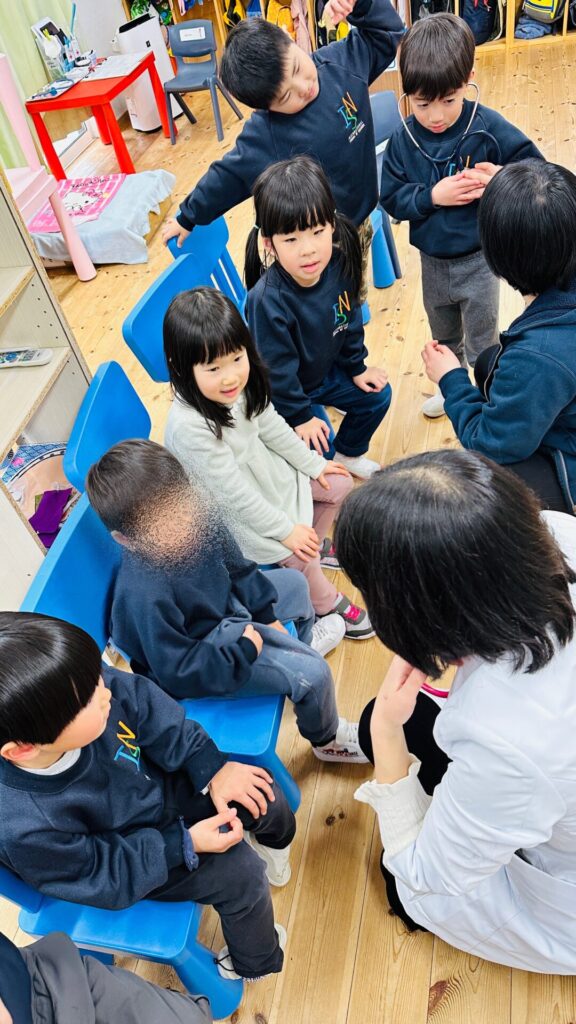
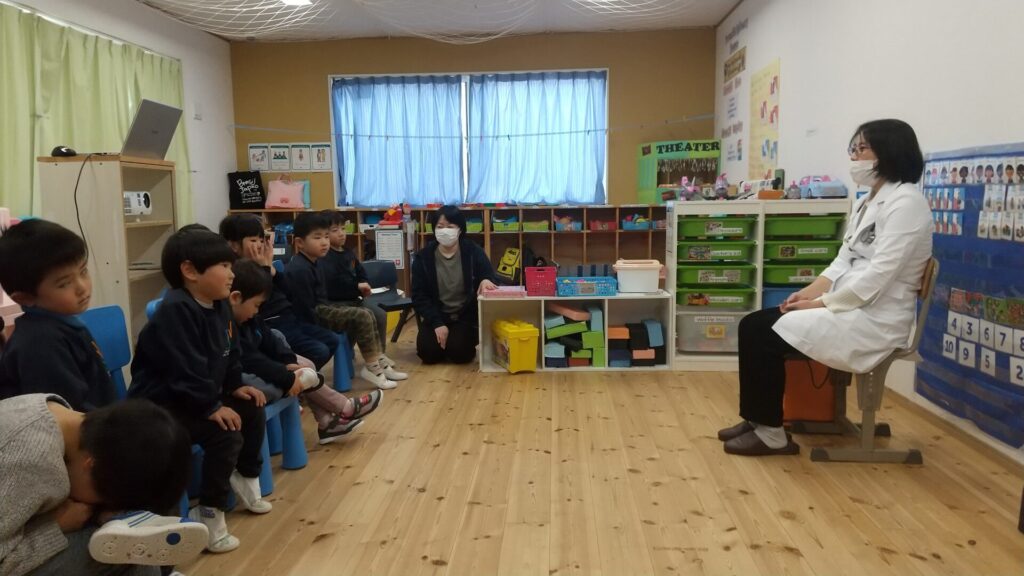
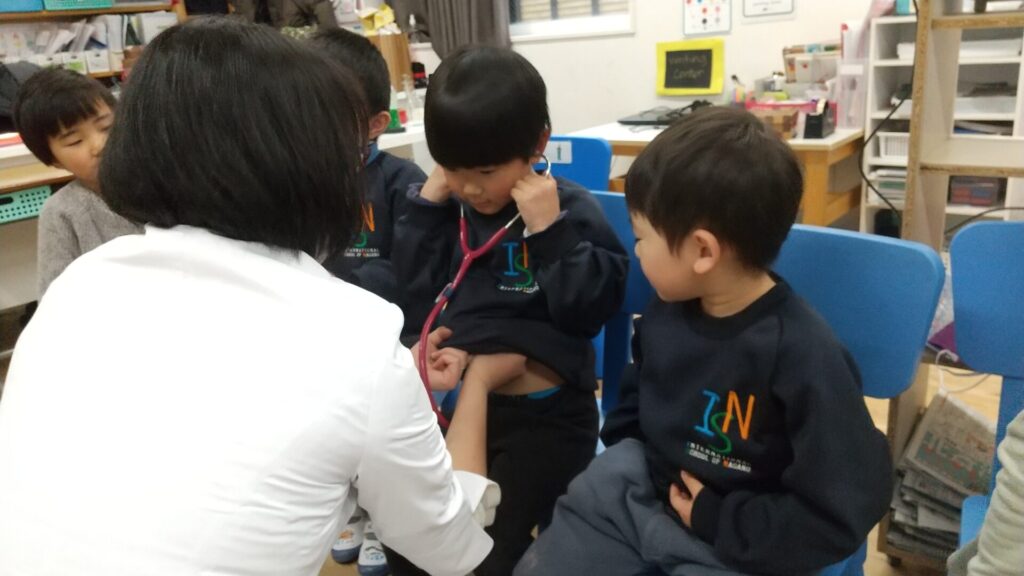
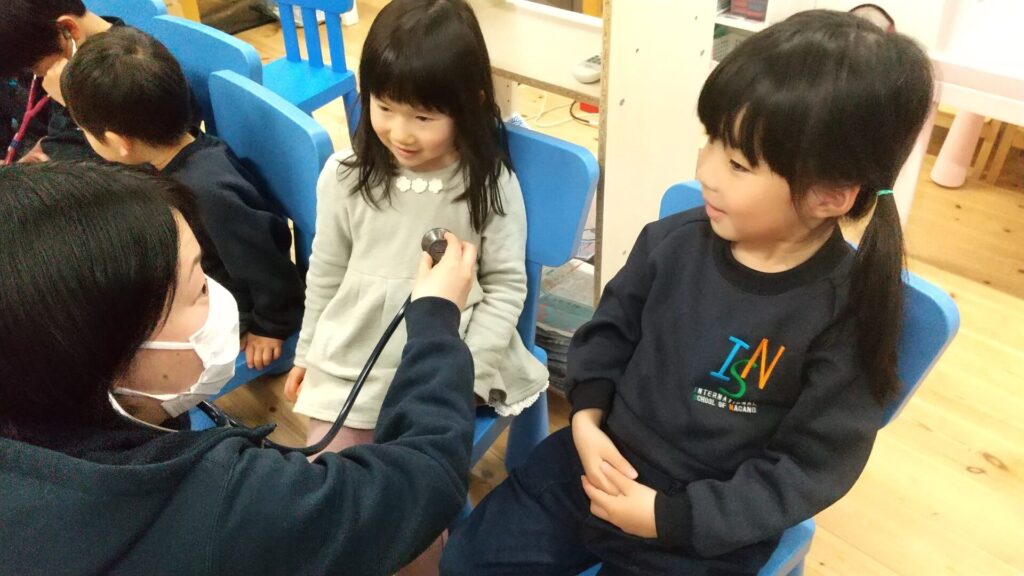
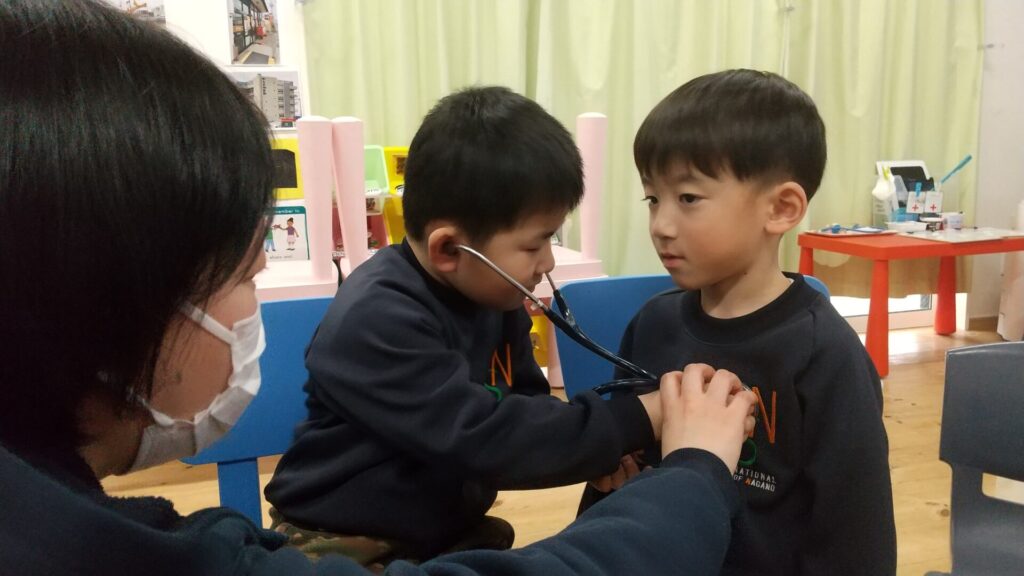
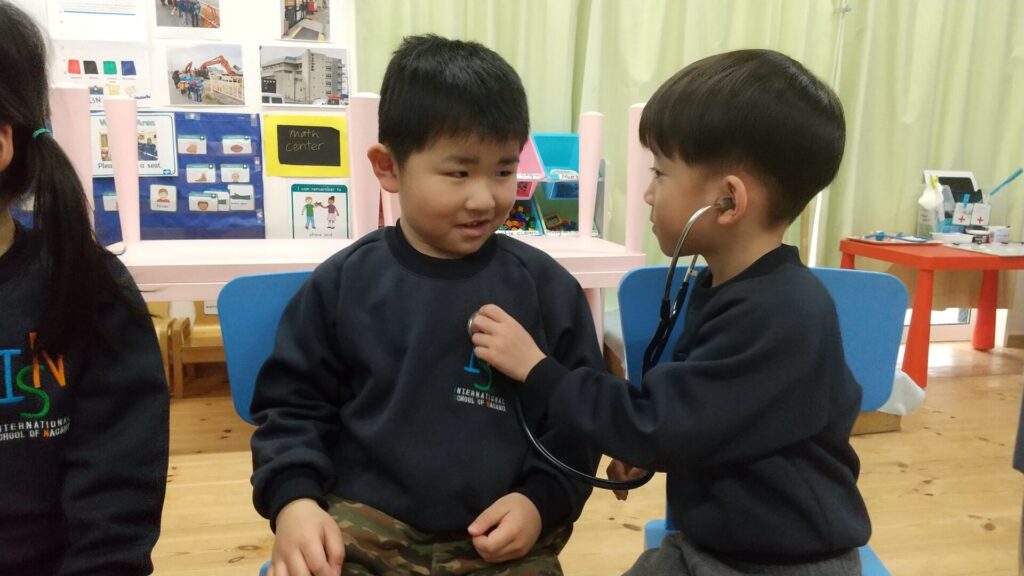
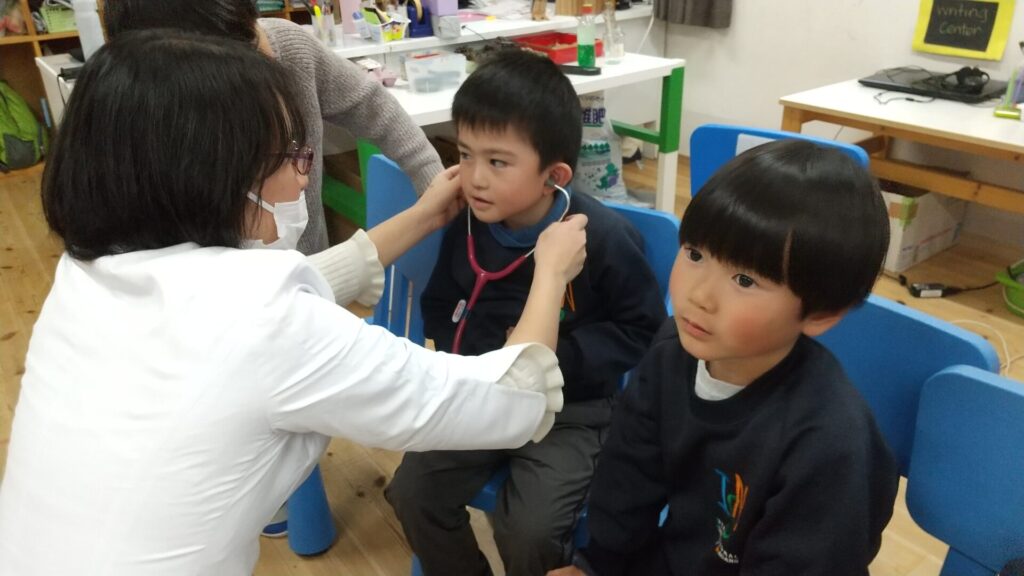
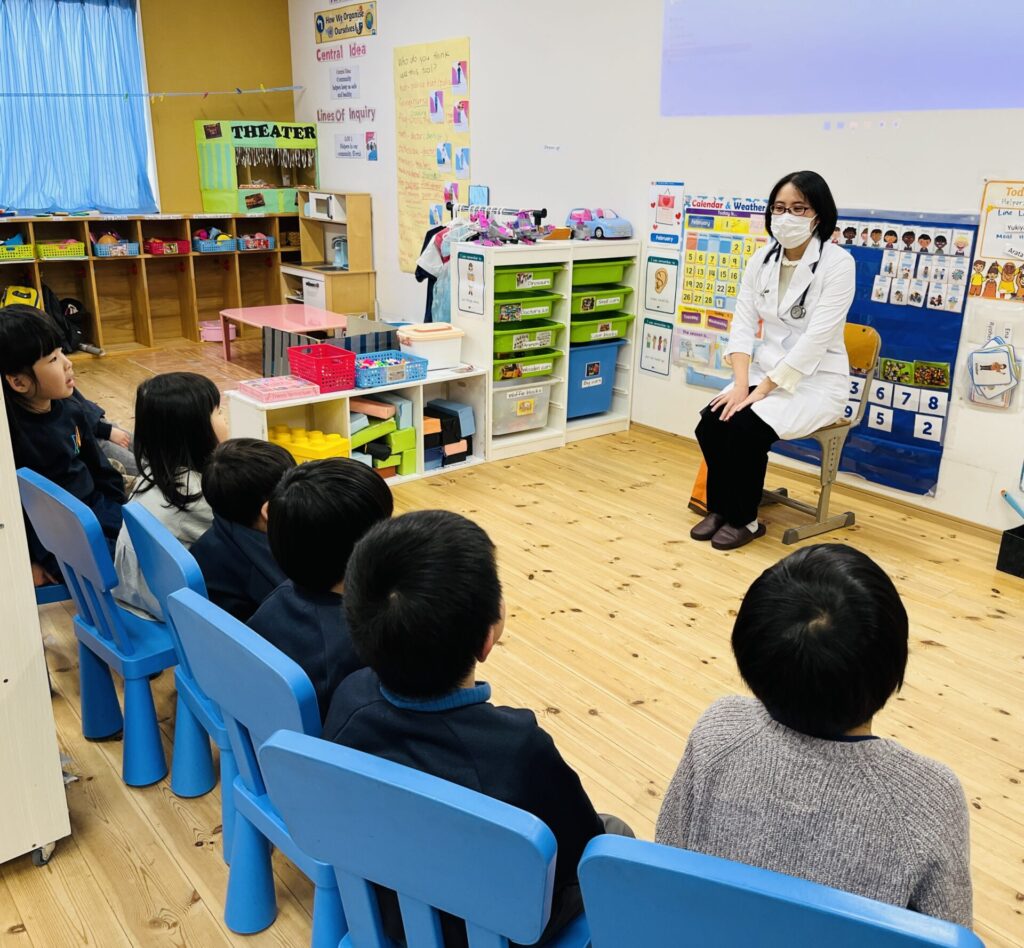

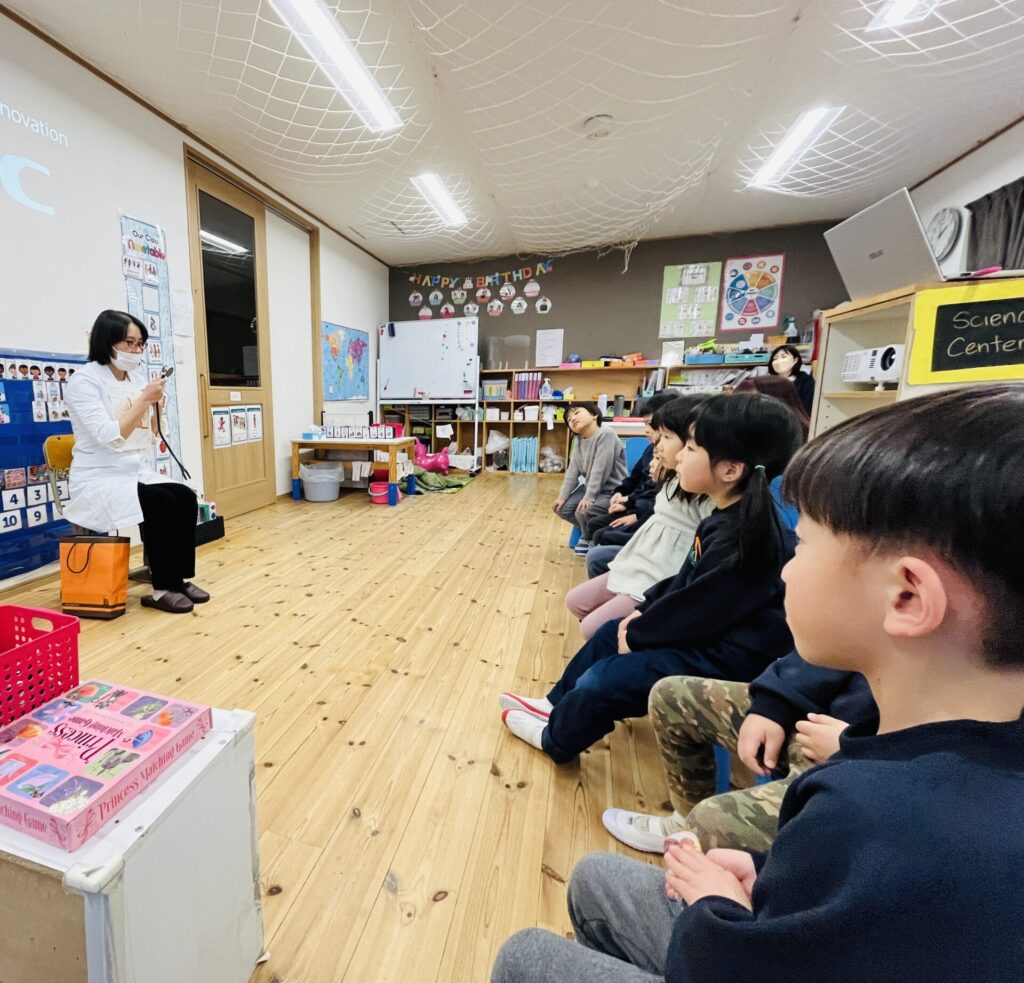
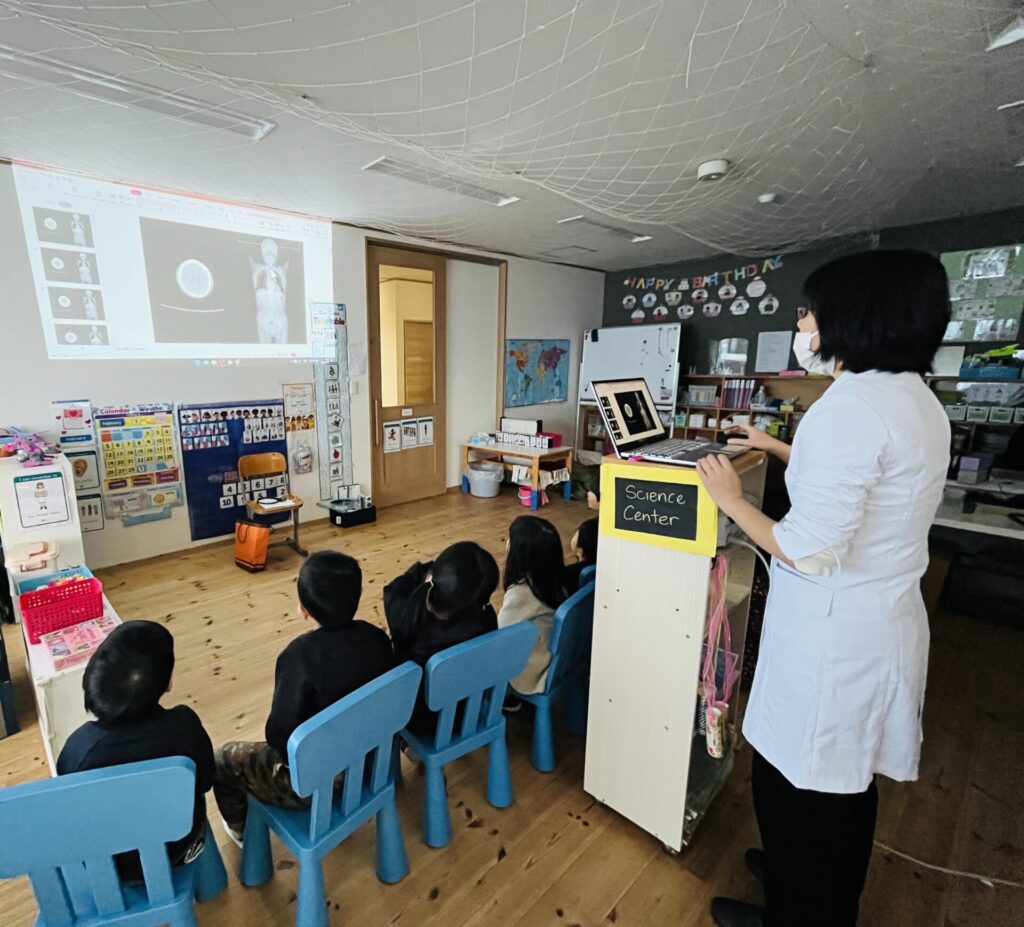
The children were busy as bees this week digging deeper into what each community helper’s jobs are, working as a team to create a child size community helper, and making their “What is in my tool box” projects.
今週のUOIでは、子ども達はグループで子どもサイズのコミュニティヘルパーを作ったり、ツールボックスプロジェクトに取り掛かり始めたり、とても充実した週を過ごしました!
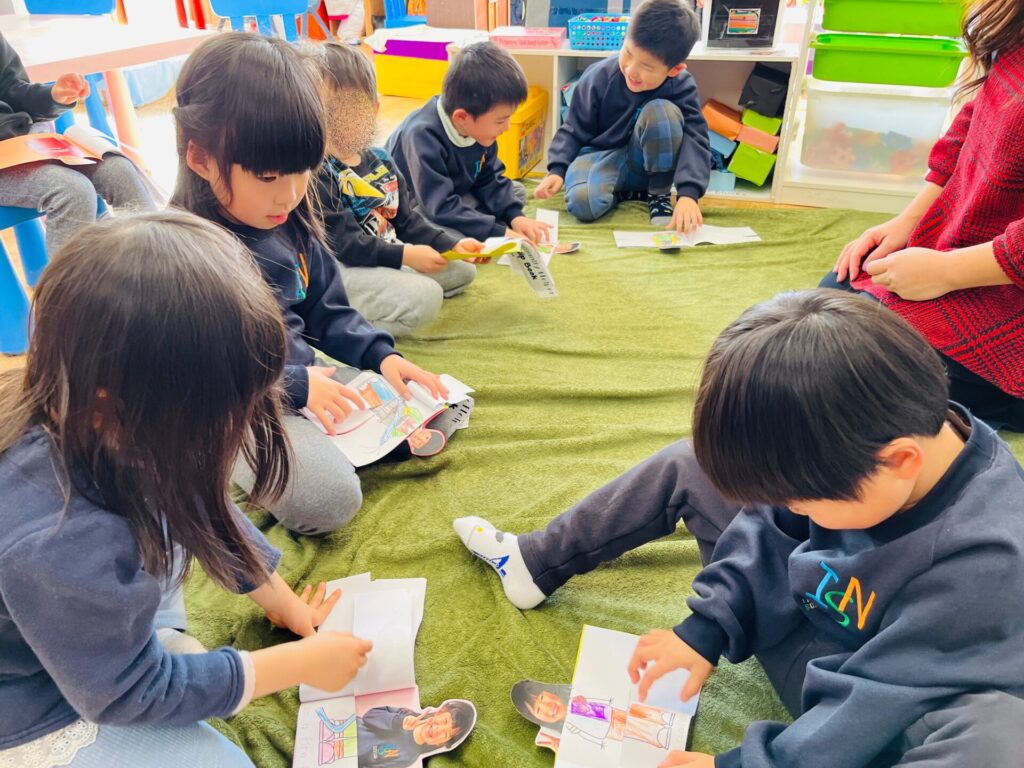
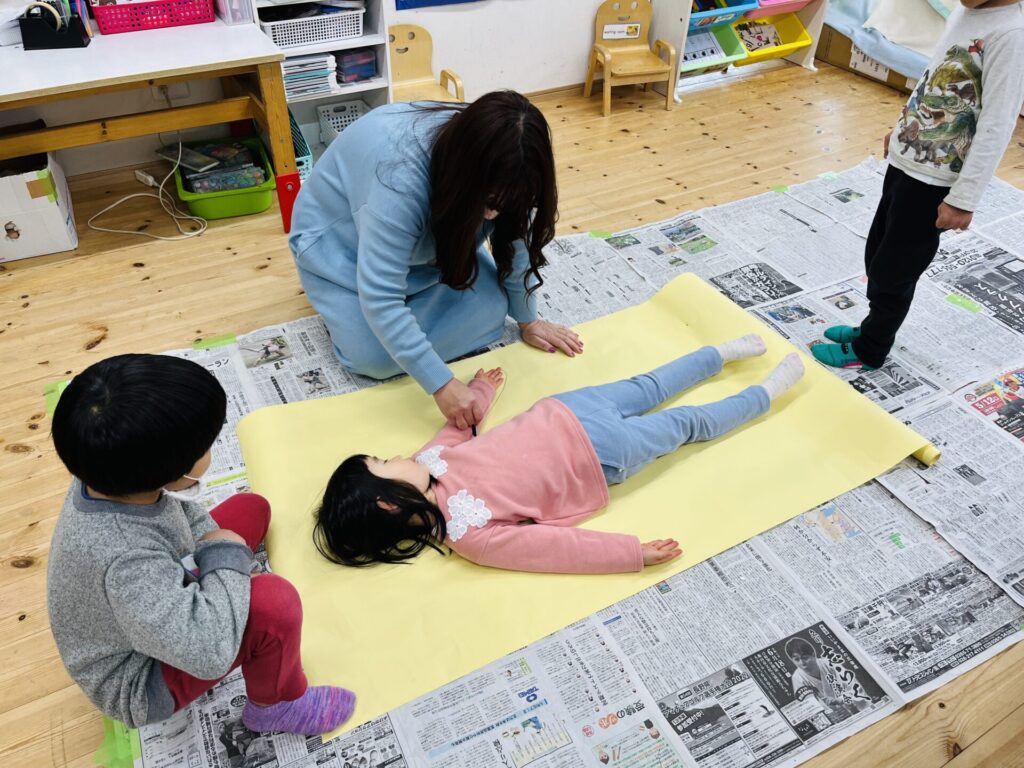
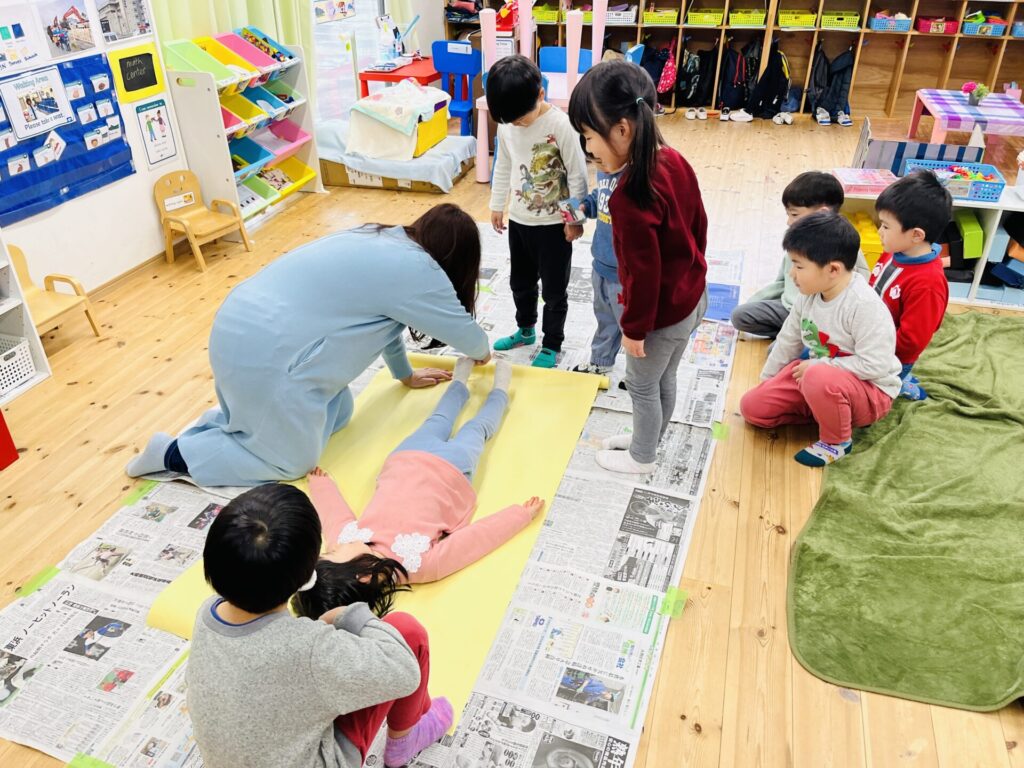
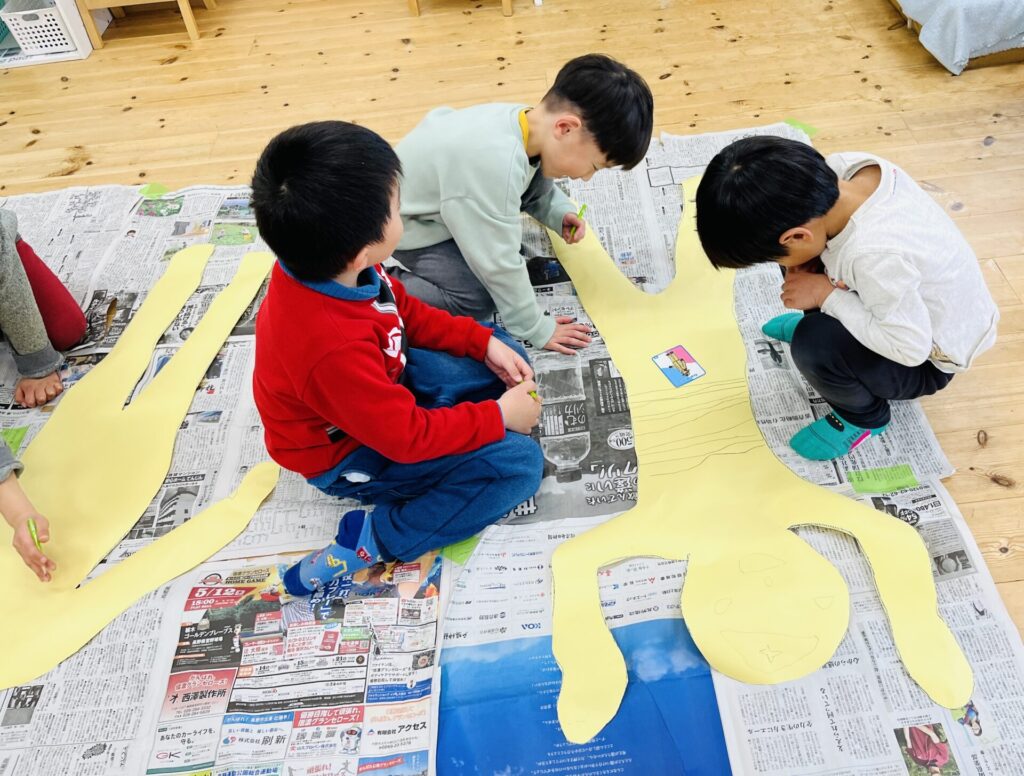
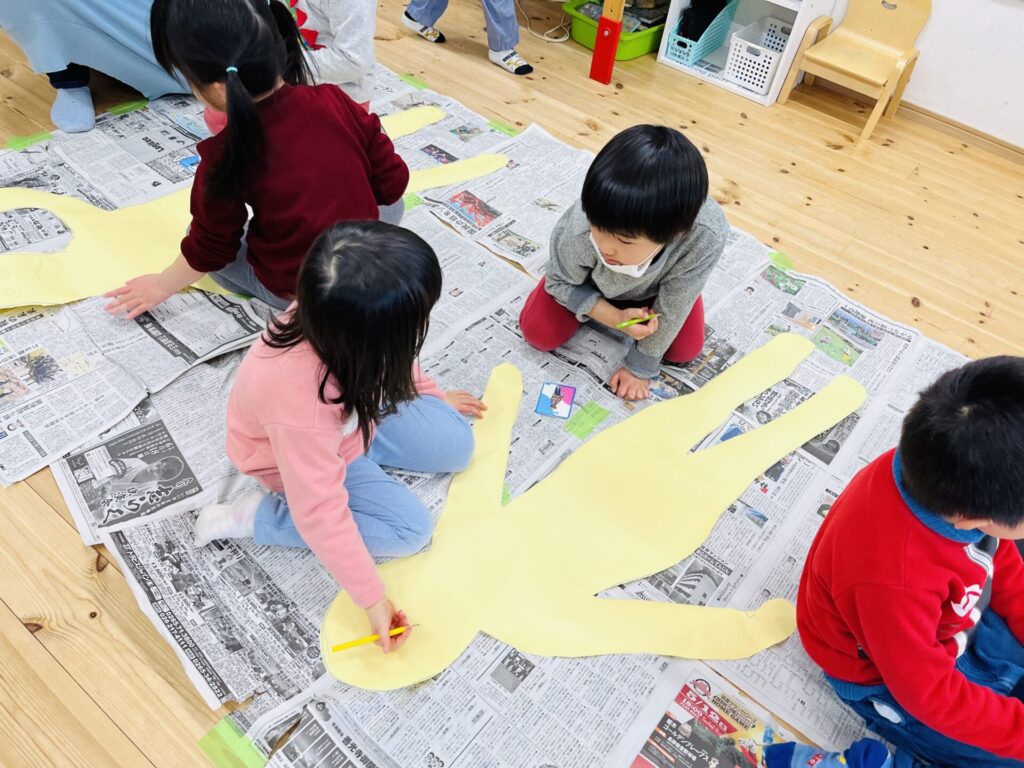

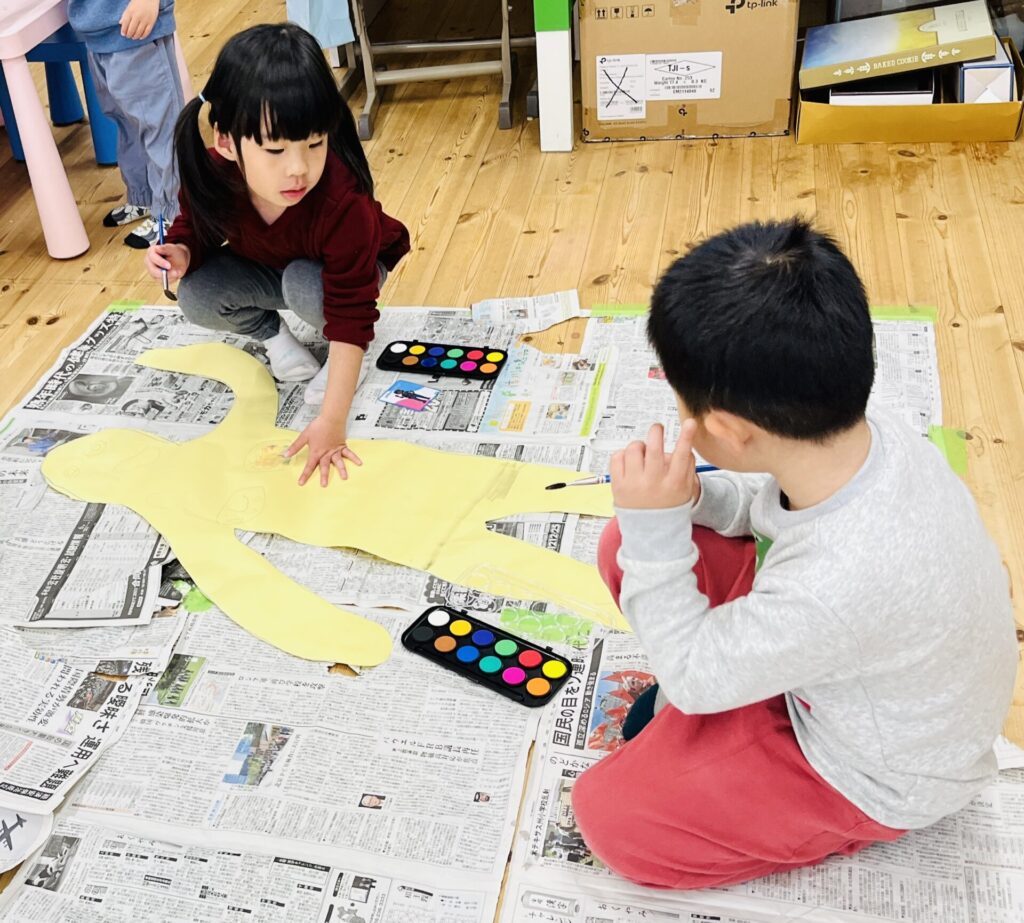
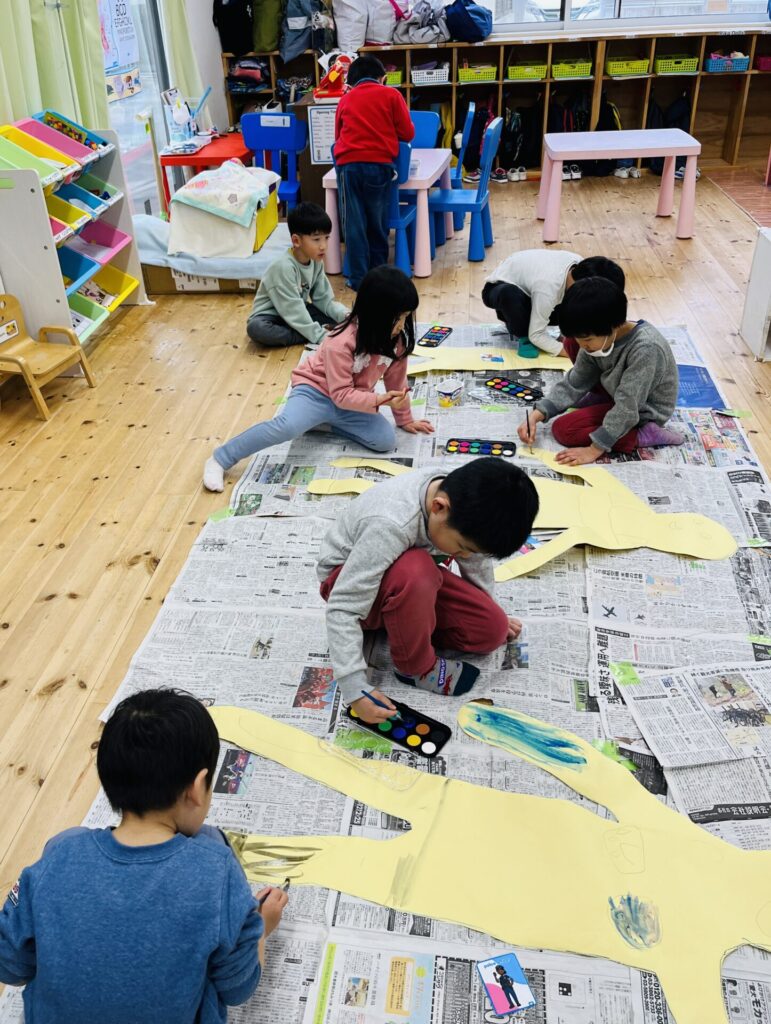
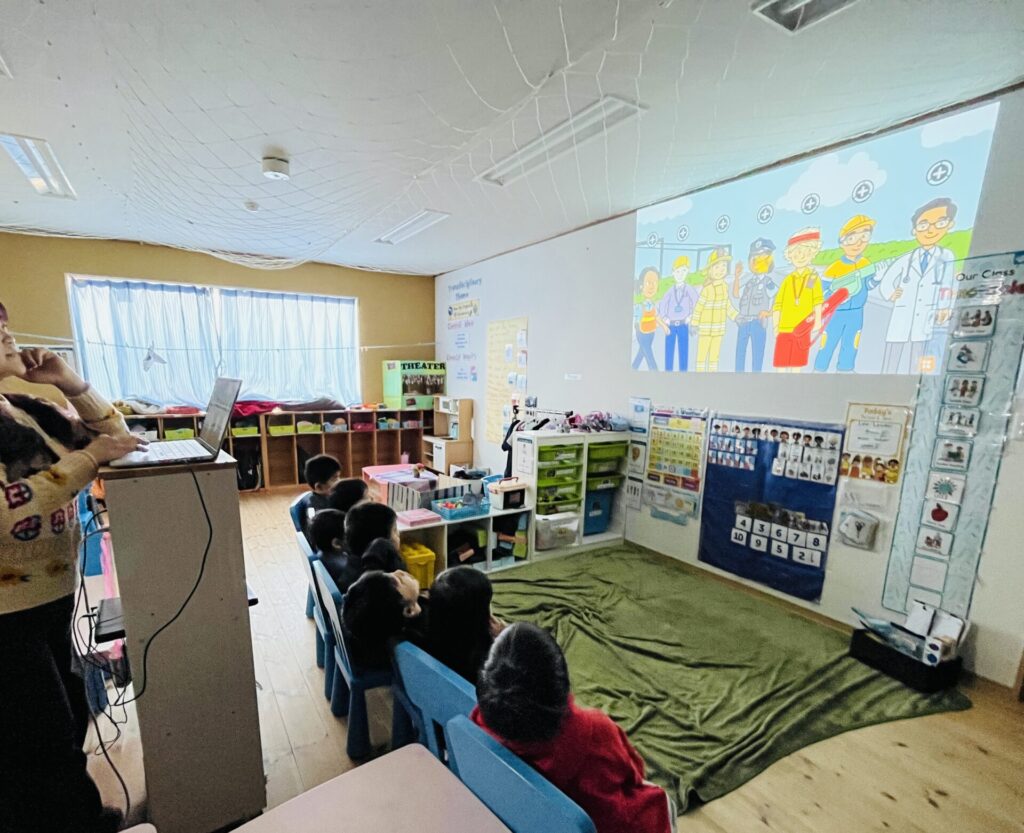


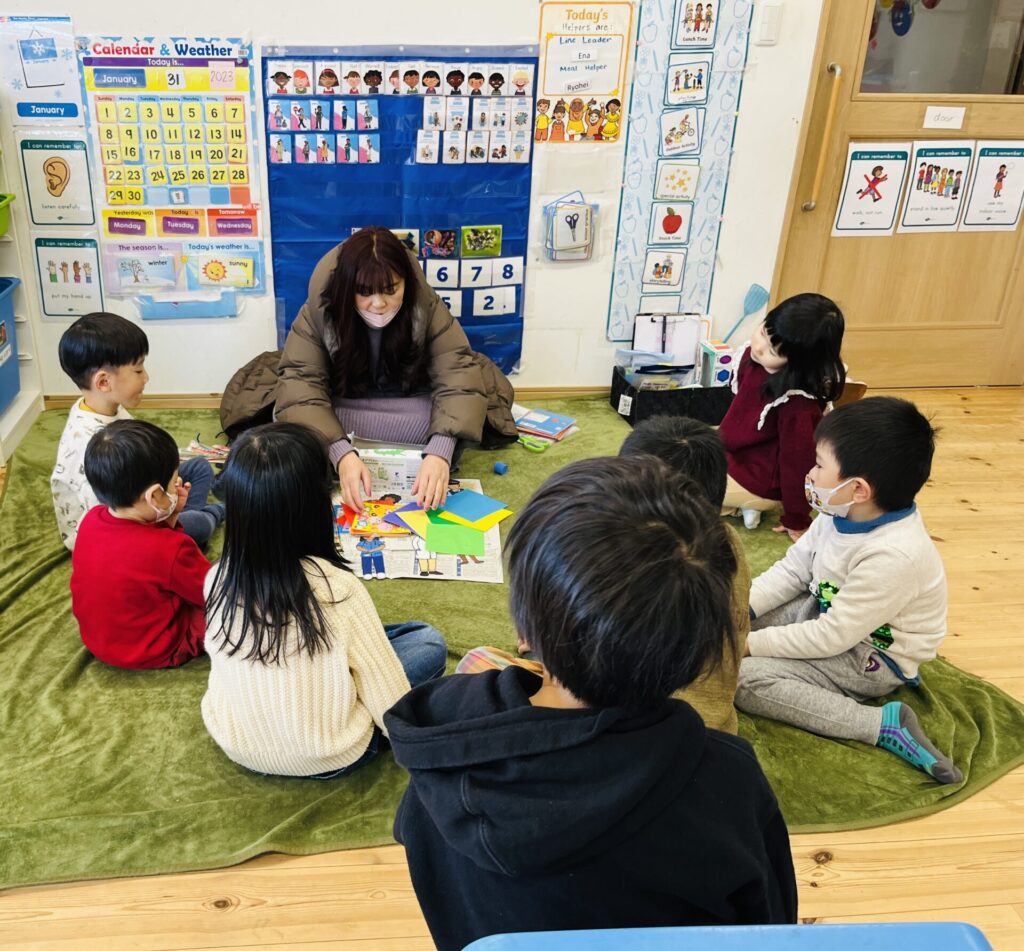
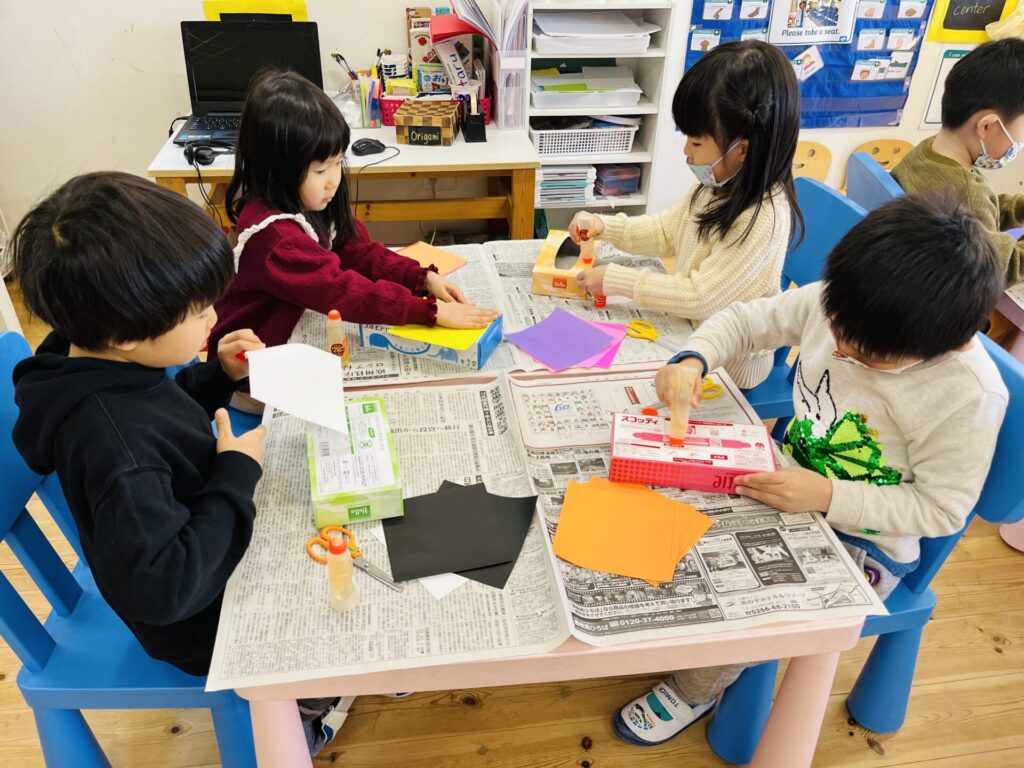
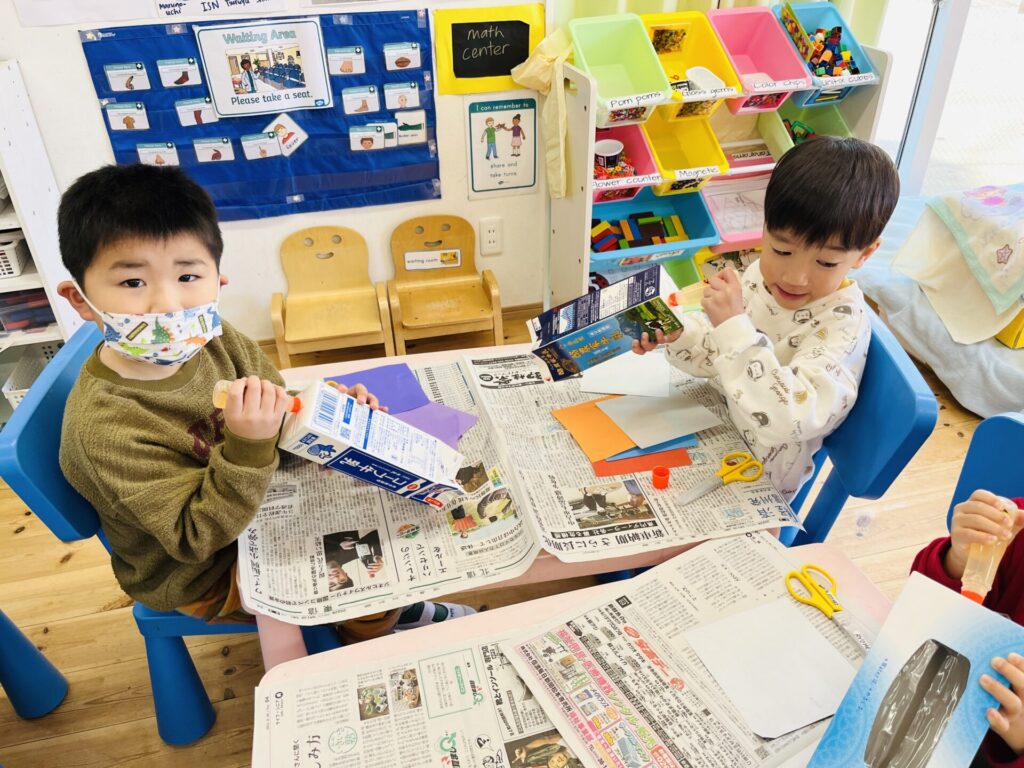
Learning about digraphs and blends are a huge challenge for the children. This week we embarked on the next journey in the phonic lessons. The children discovered that sounds do not stand alone and that when two sounds are together they make a new sound. In writing, the children started working on listening to the digraphs and blends and making their marks in the booklets. We continue to read the High Frequency books and we can see children are getting better at recognizing the high frequency words.
ダイグラフ(二字一音)とブレンド(混合語)は子ども達にとって大きなチャレンジとなっています。今週のフォニックスでは次のステップへ進みました。文字のサウンドは二つ一緒になると違うサウンドになることを学びました。ライティングではダイグラフとブレンドの音を聞きながら書く練習をしています。リーディングでは引き続き、頻繁に使われる単語の本を読んでいますが、子ども達は本に出てくるよく使われる単語を覚えるのが上手くなってきています。
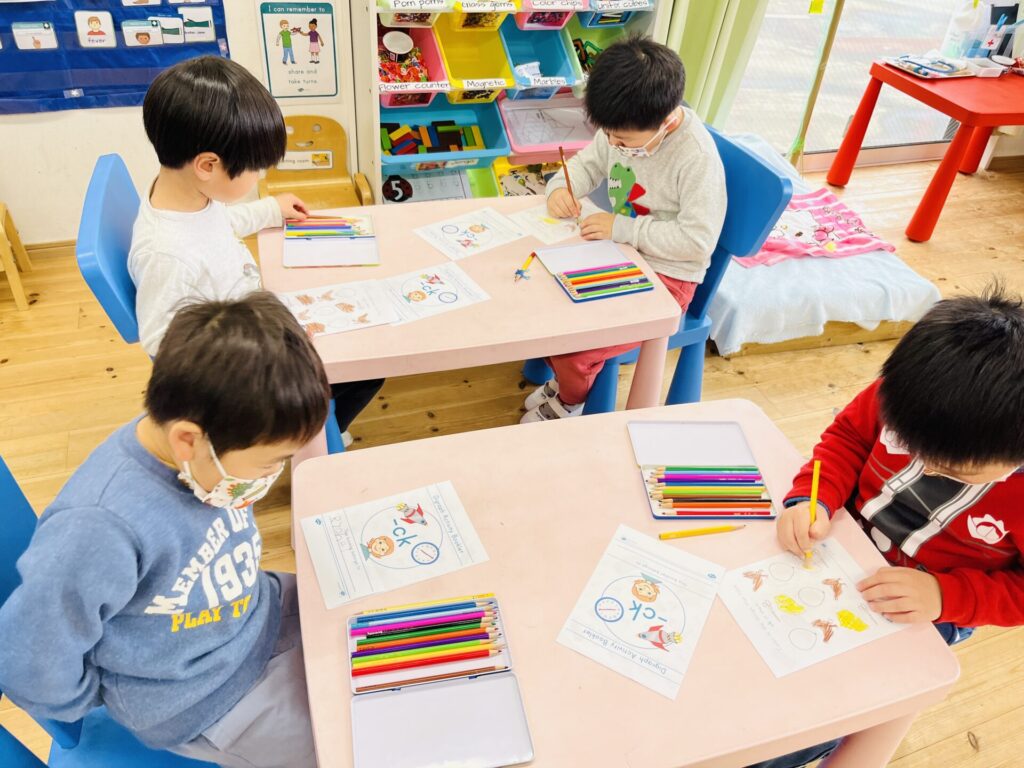
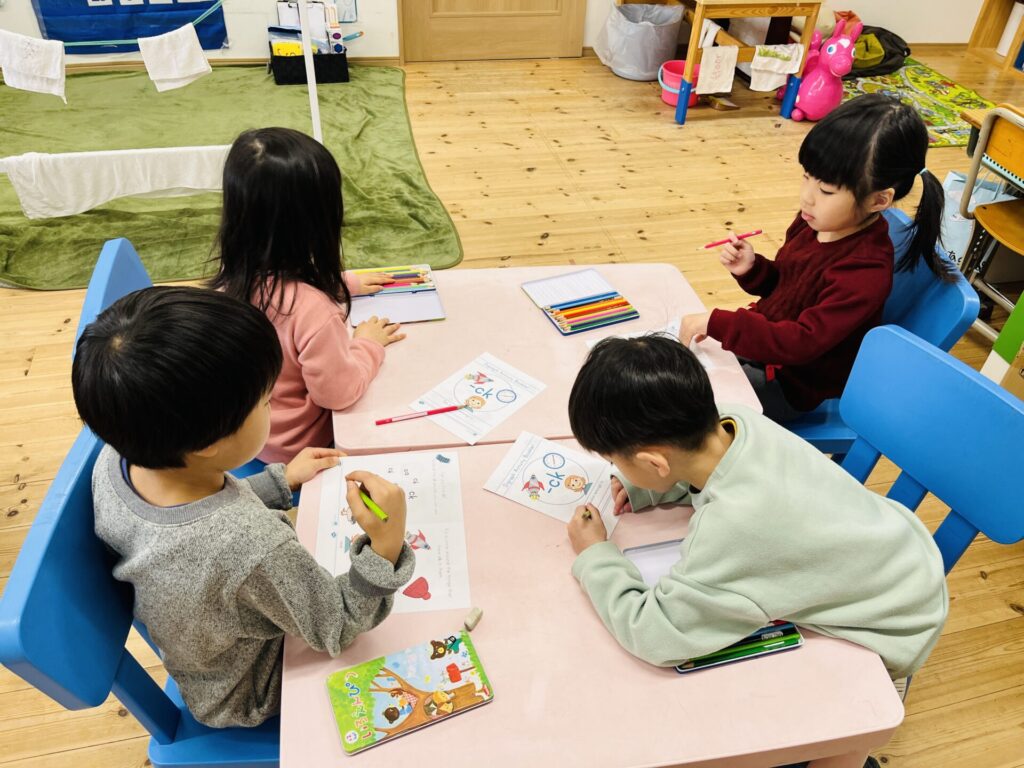
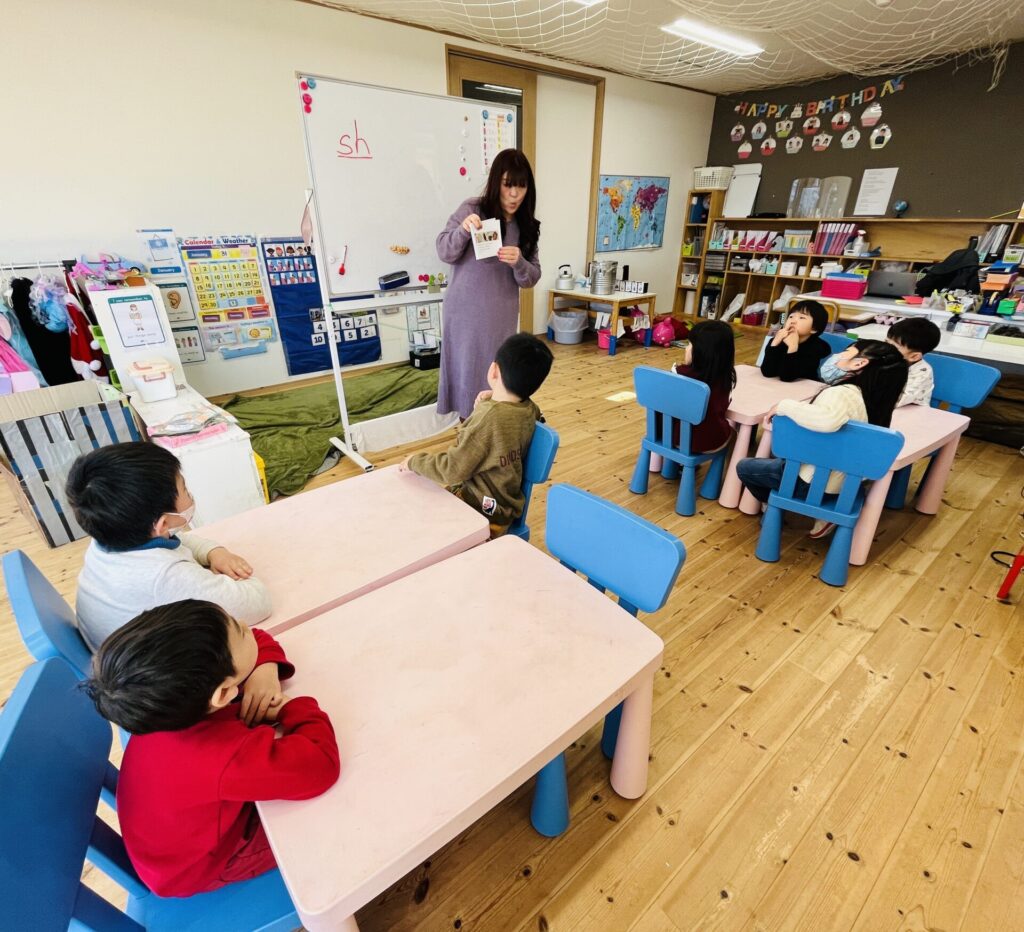
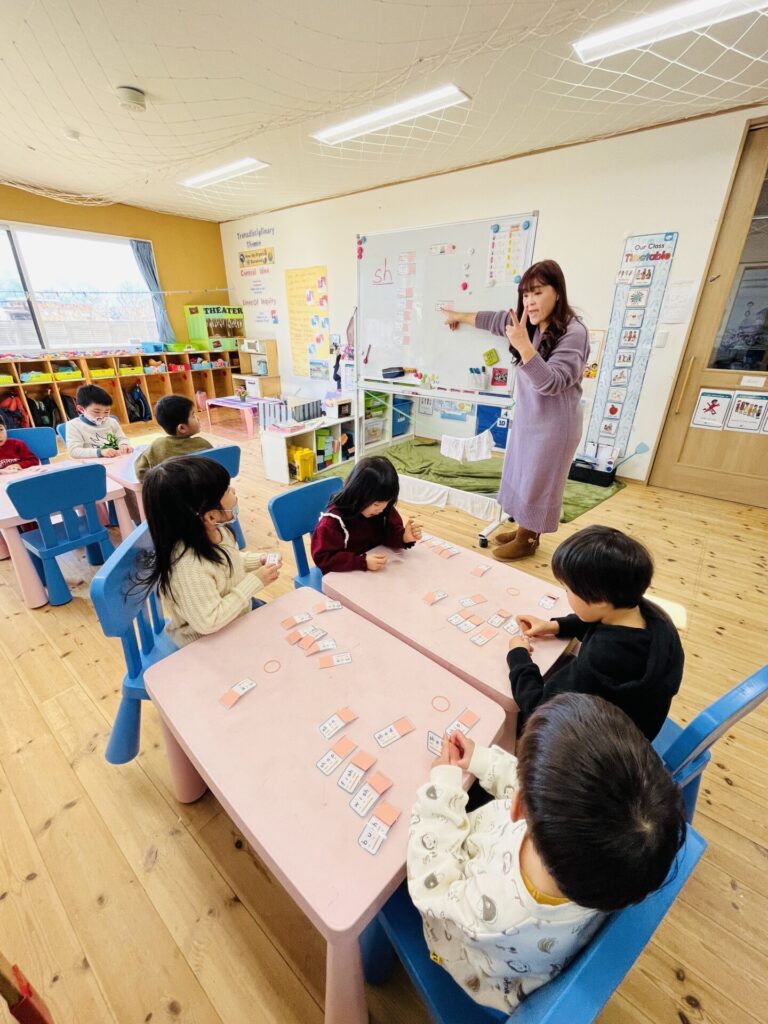
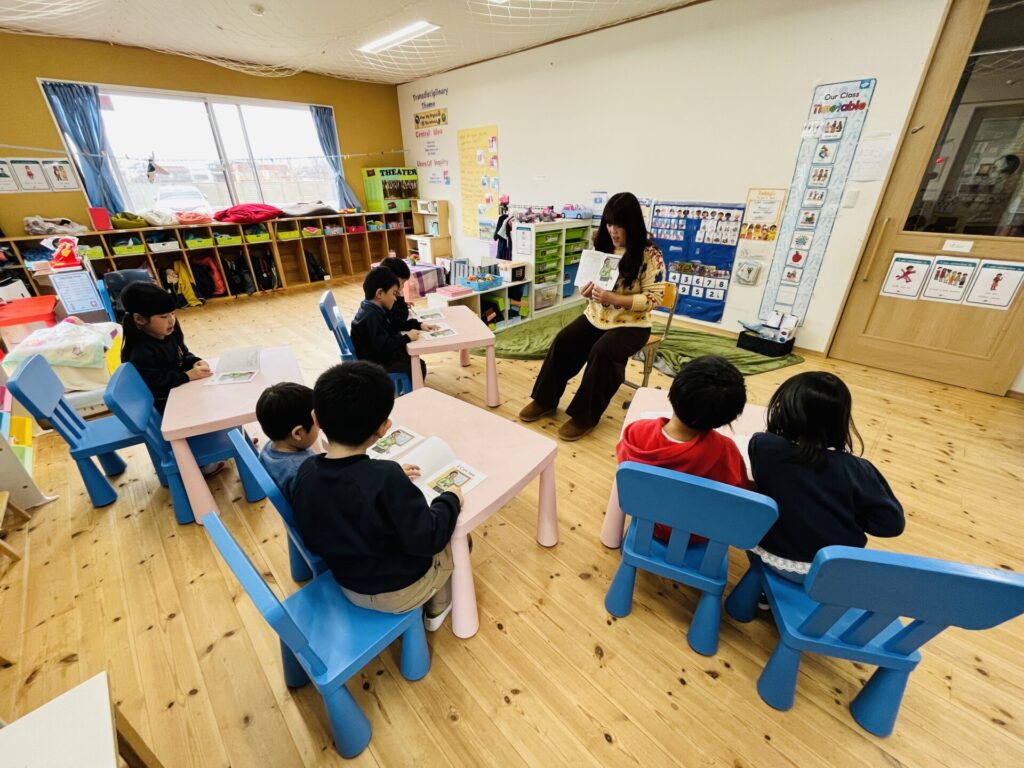
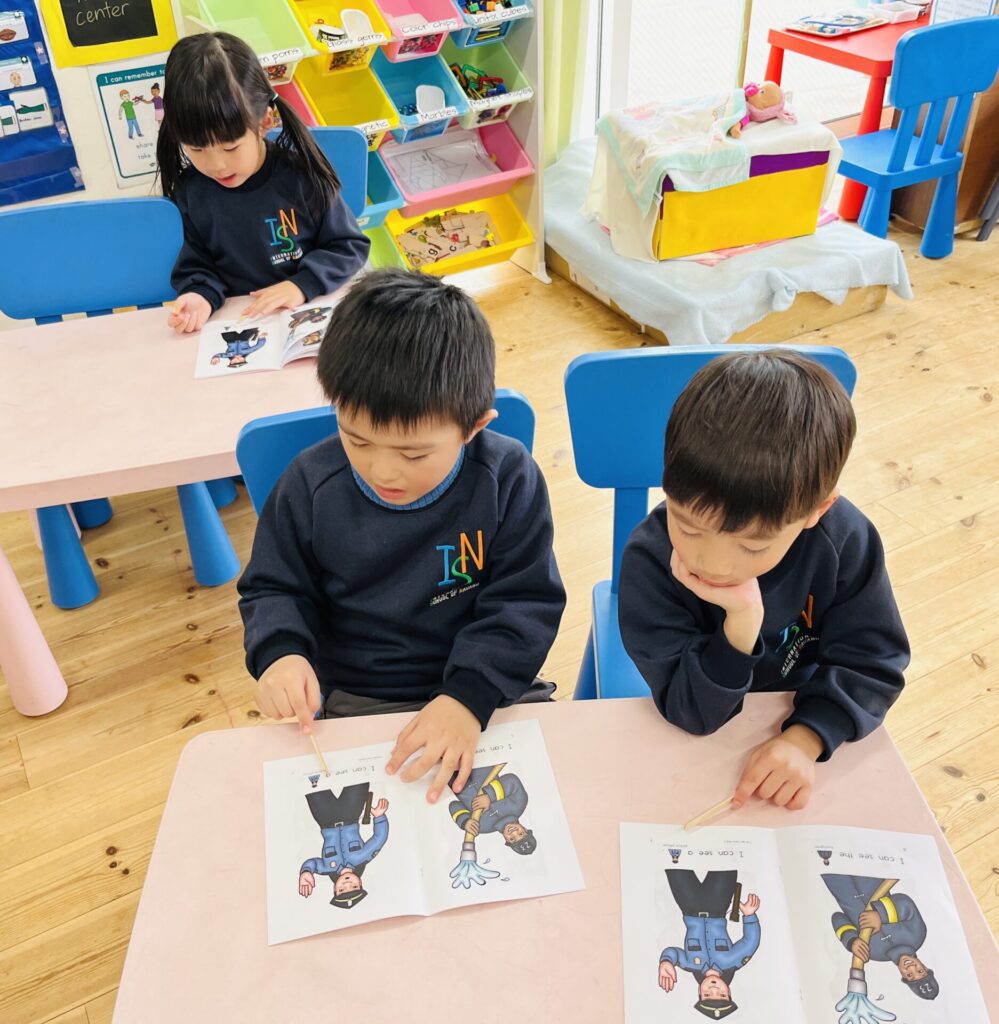
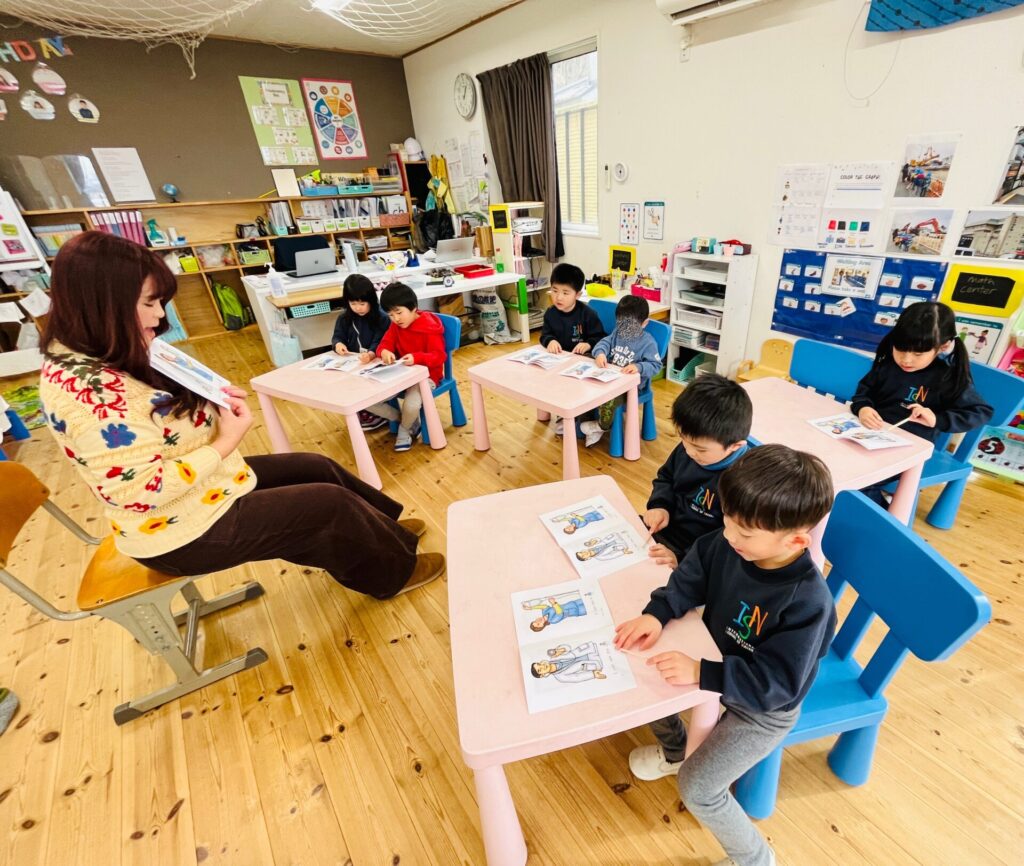
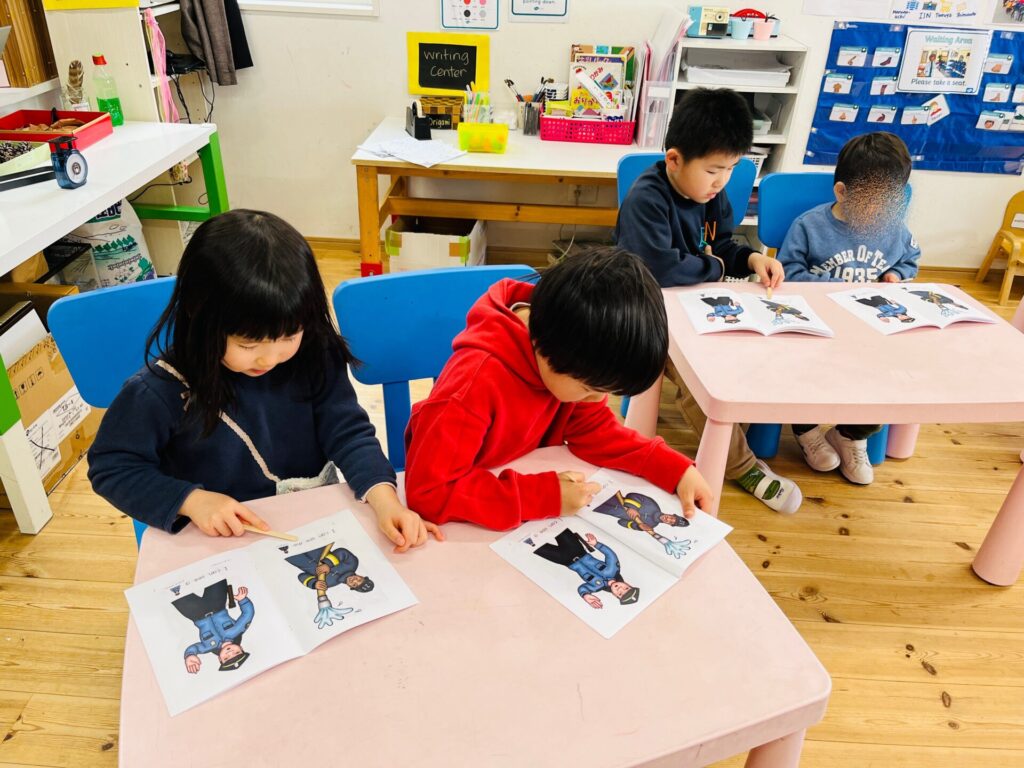
Part of the fun of our lessons is to listen to what the children are asking and planning ways to discover the answers together. These weeks, whenever we go on our walk to the parks, they notice the water in the bucket on the road freezes while the water in the river never freezes. We did a little science experiment to find out the difference between confined water and running water. They were amazed when they found out that running water almost never freezes compared to still water.
レッスンの楽しみの 1 つは、子ども達の質問に耳を傾け、その答えを見つける方法をみんなで一緒に計画することです。ここ数週間、公園に散歩に行くと、道路のバケツの水が凍っているのに、川の水が凍っていないことに気づきます。動いていない水と流水の違いを見つけるために、ちょっとした科学実験を行いました。彼らは、流水が静止状態の水に比べてほとんど凍らないということを知ってとても驚いた様子でした。
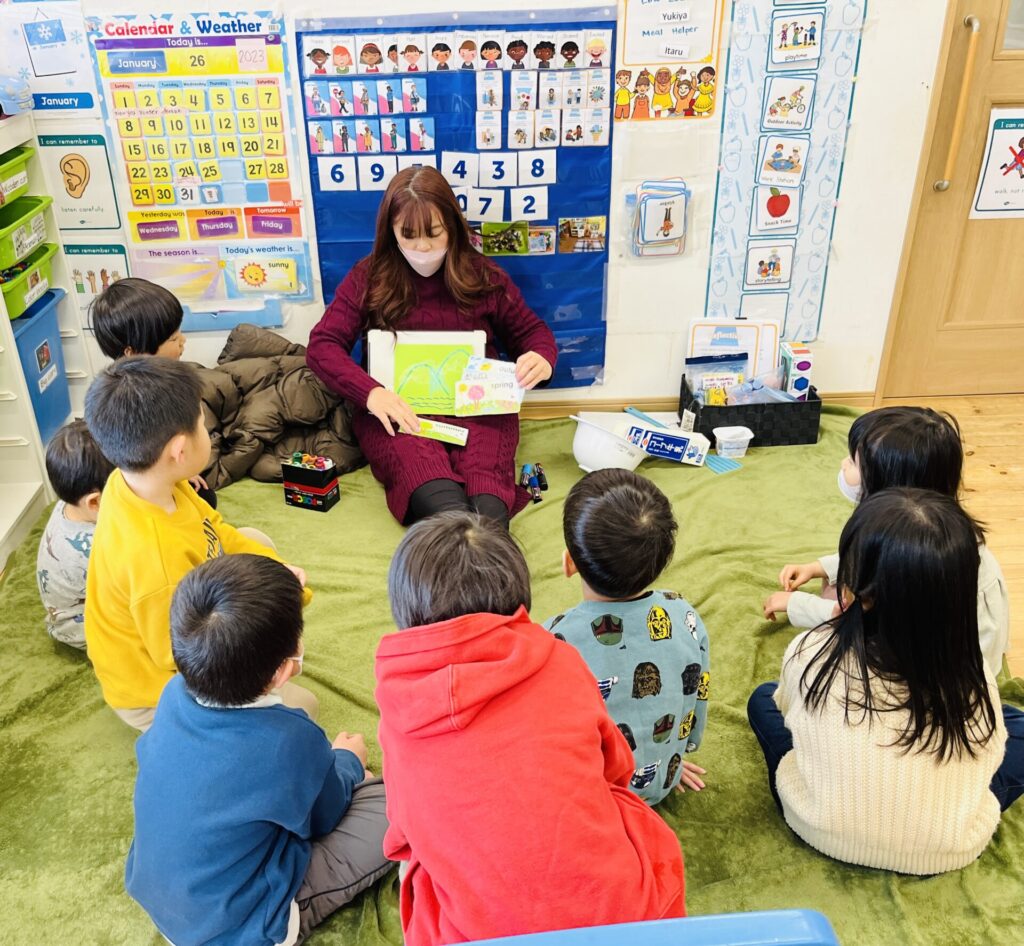
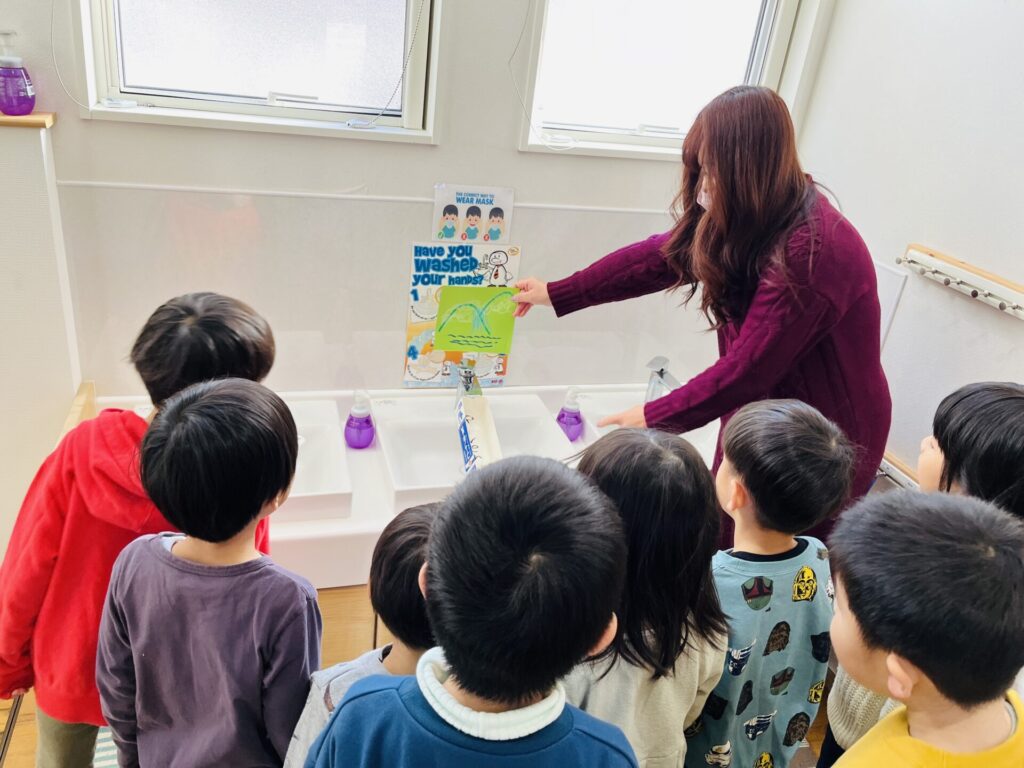
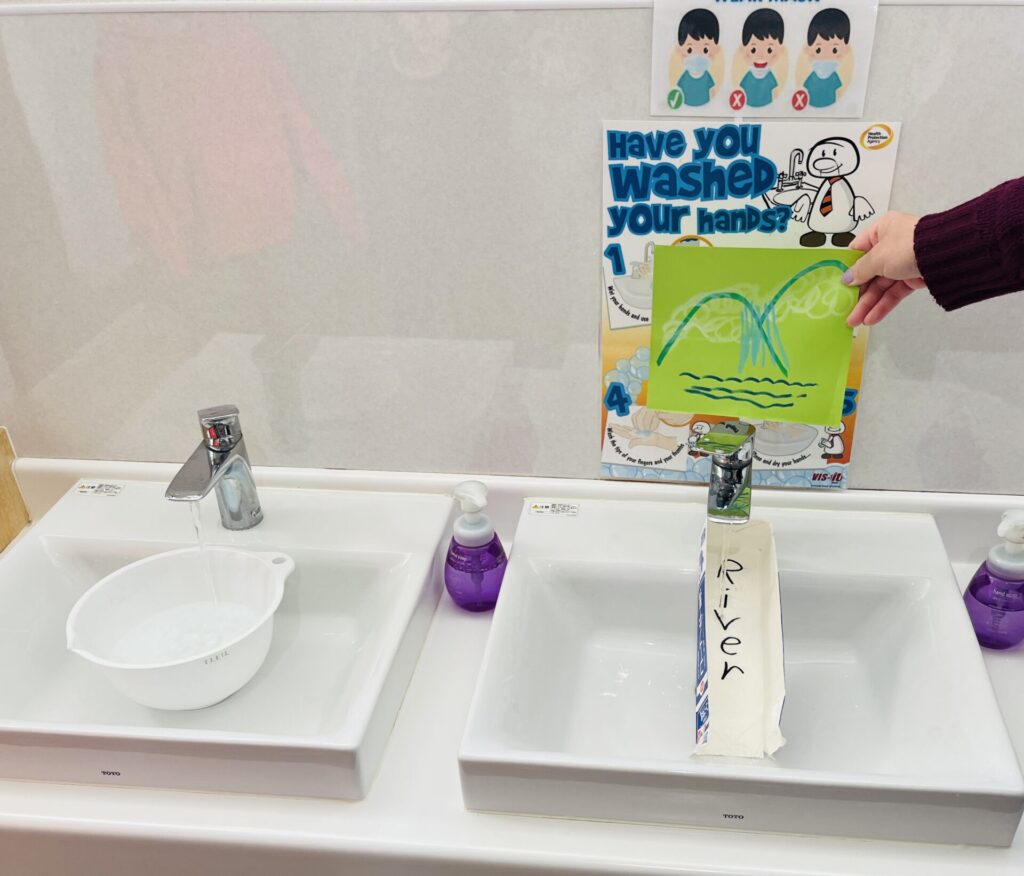
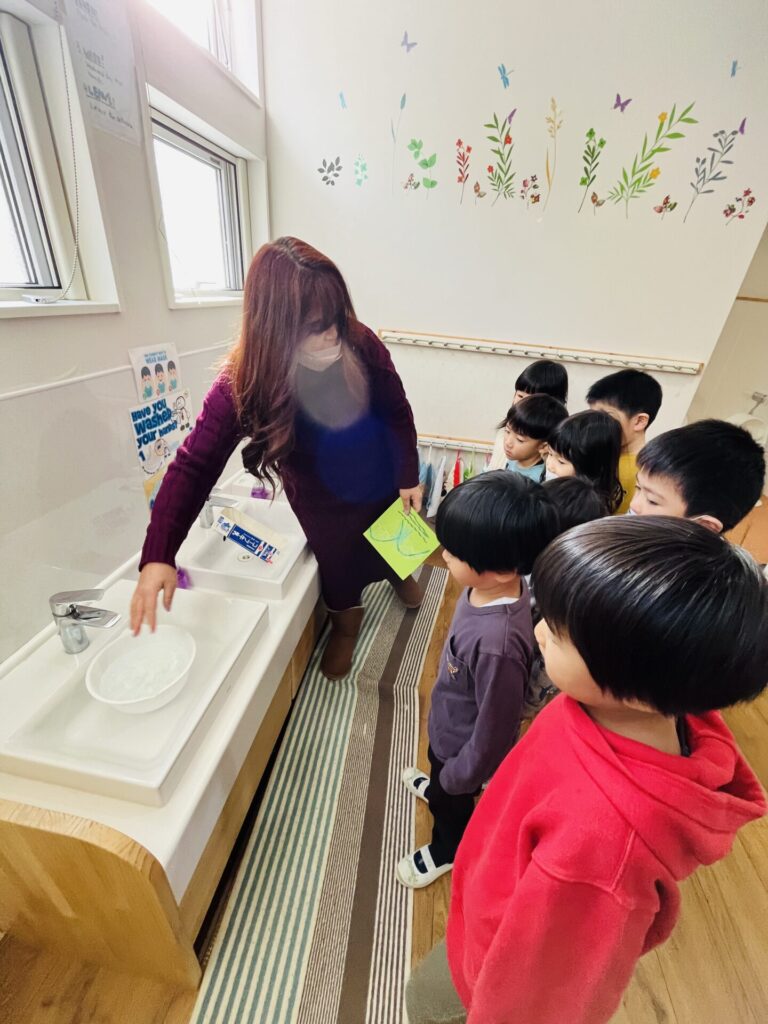
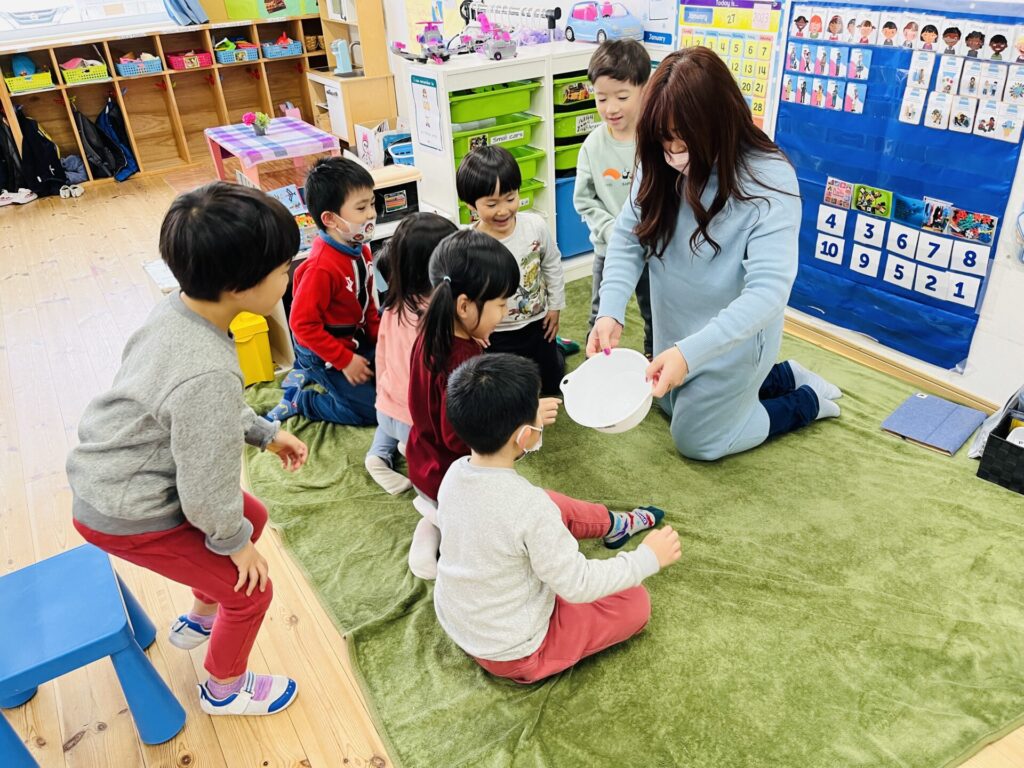
A view of what the children have been working on at the music lessons.
ミュージックレッスンの様子です。
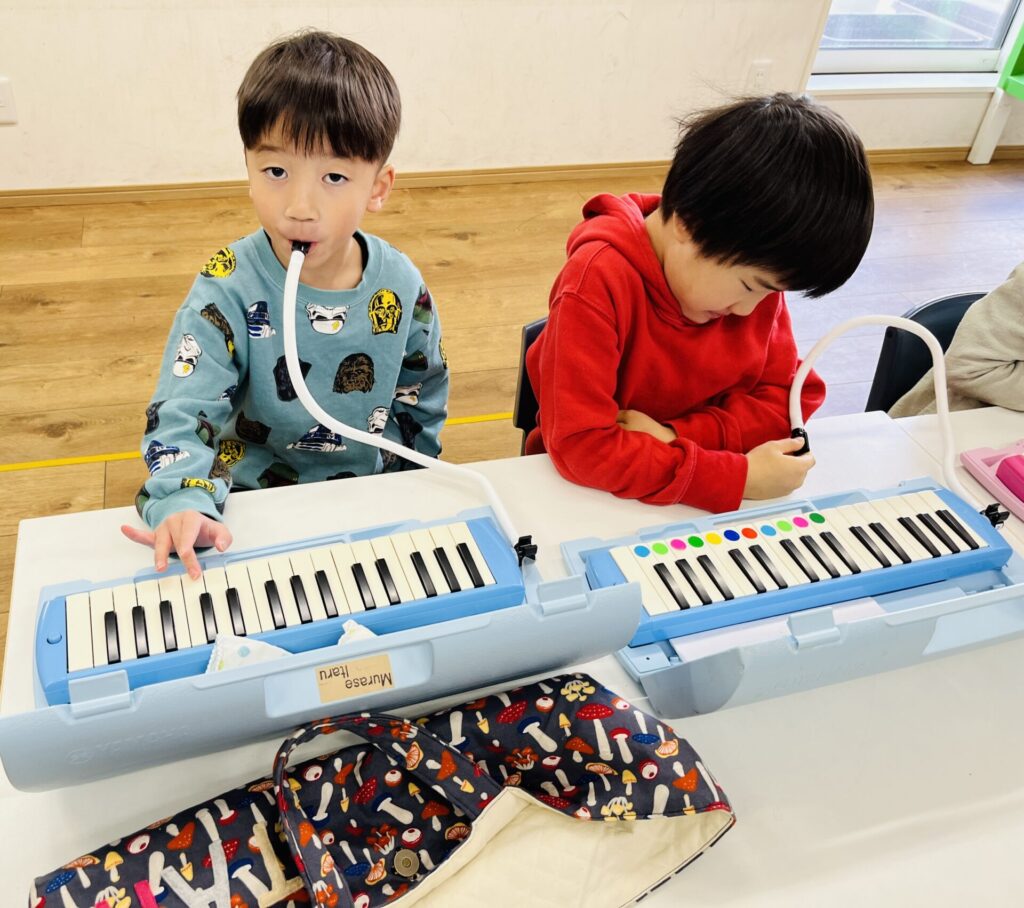
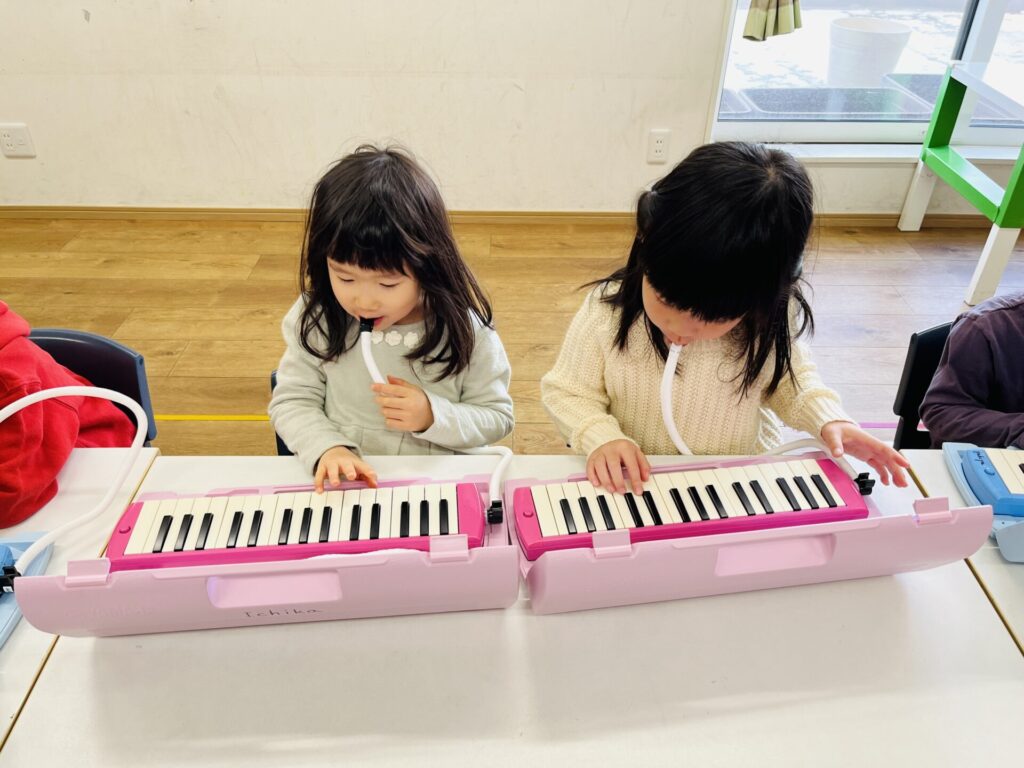
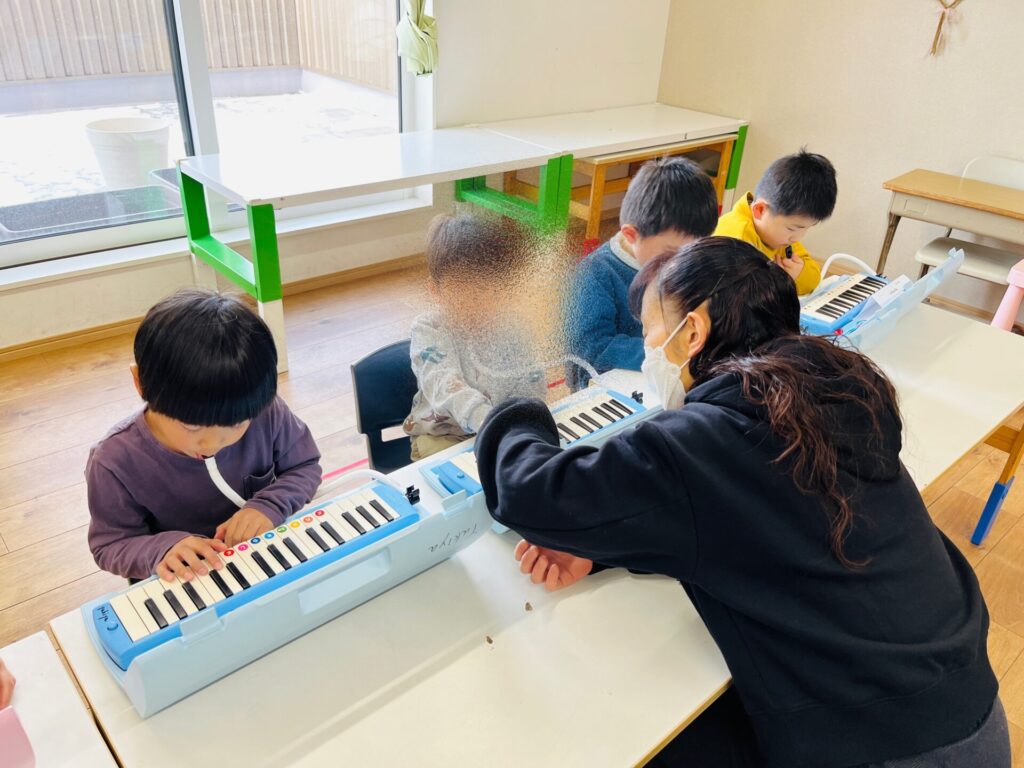
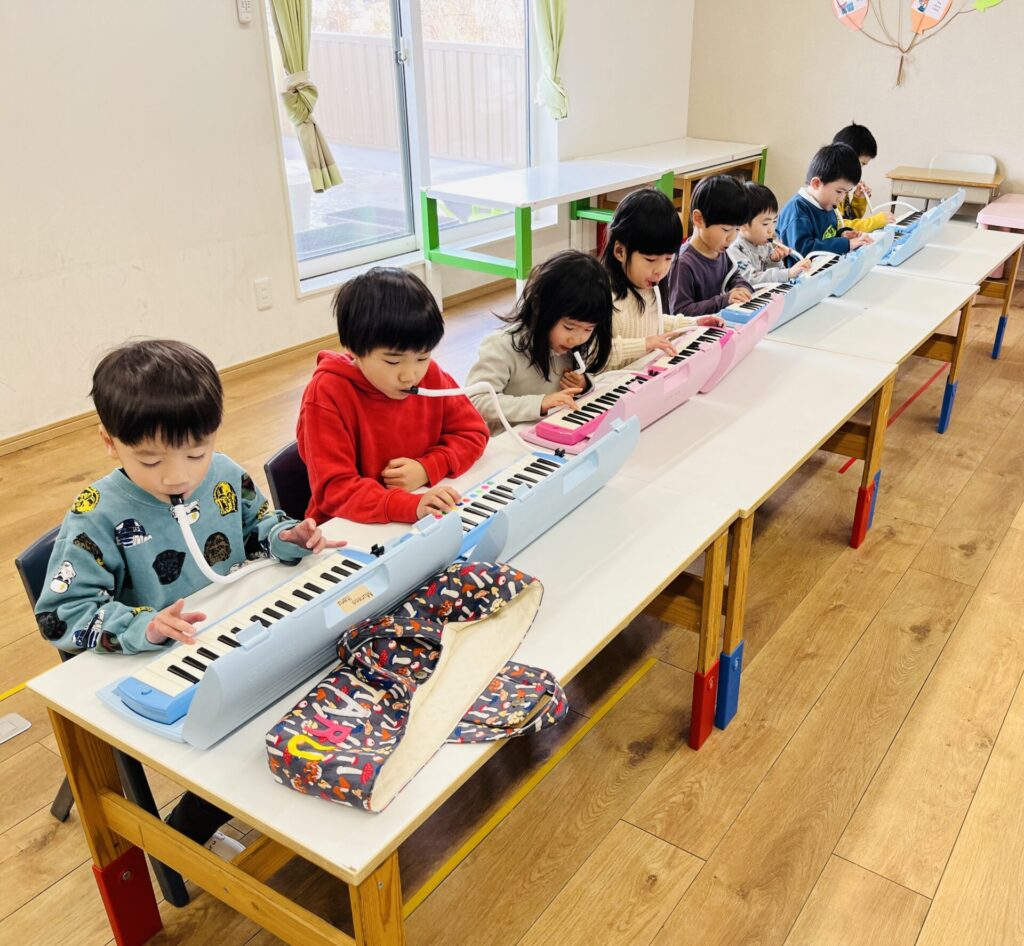
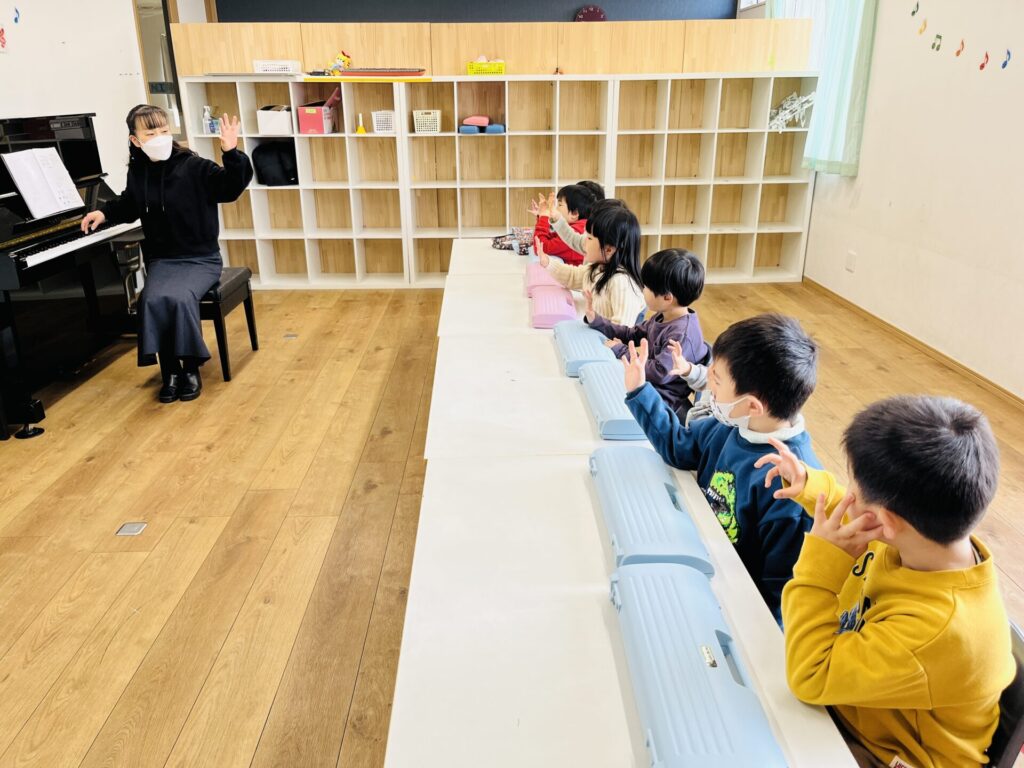
We have officially entered the brutal winter of Shinshu. We felt it especially when we went on our regular walks to the parks. The bitter wind blows hard making rosy cheeks, chap lips, and running noses on the children. Yet they braced themselves as they ran loose outside.
信州は本格的な厳しい冬に突入しました。特に公園への散歩に行ったときに痛感します。風が激しく吹き、子ども達の頬は赤くなり、鼻水が出る子どももいます。それでも、子ども達は外で走り回り、鬼ごっこなどを楽しみます。
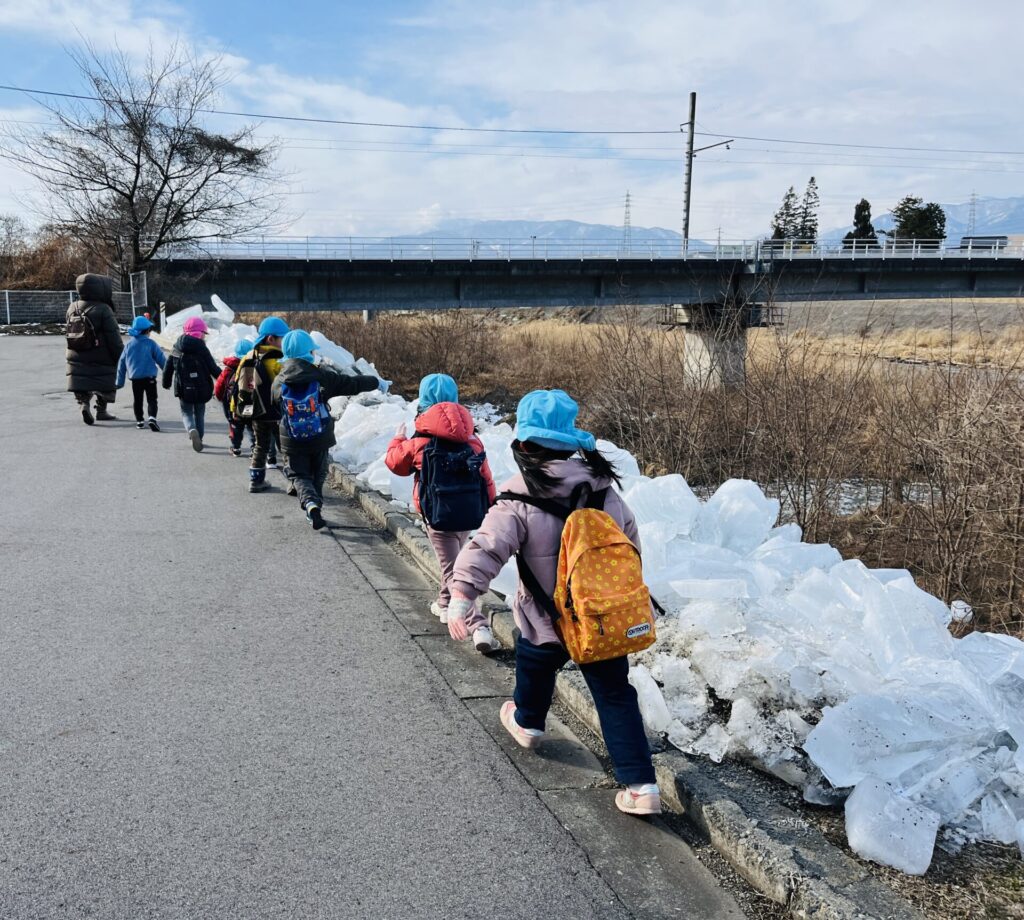
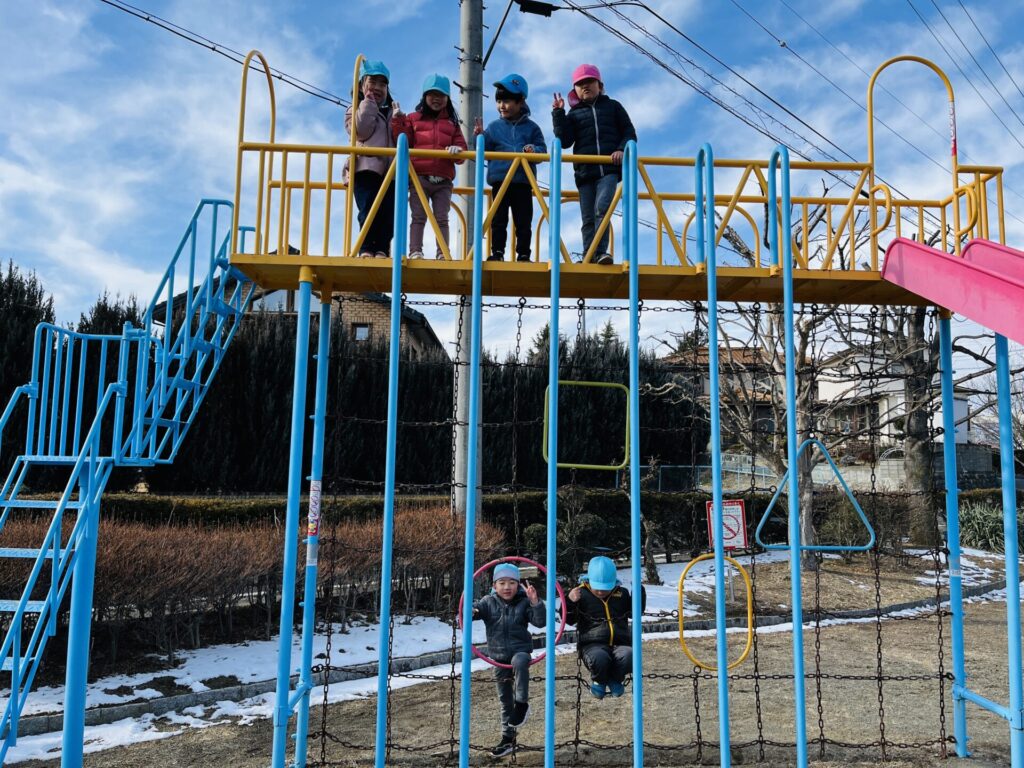
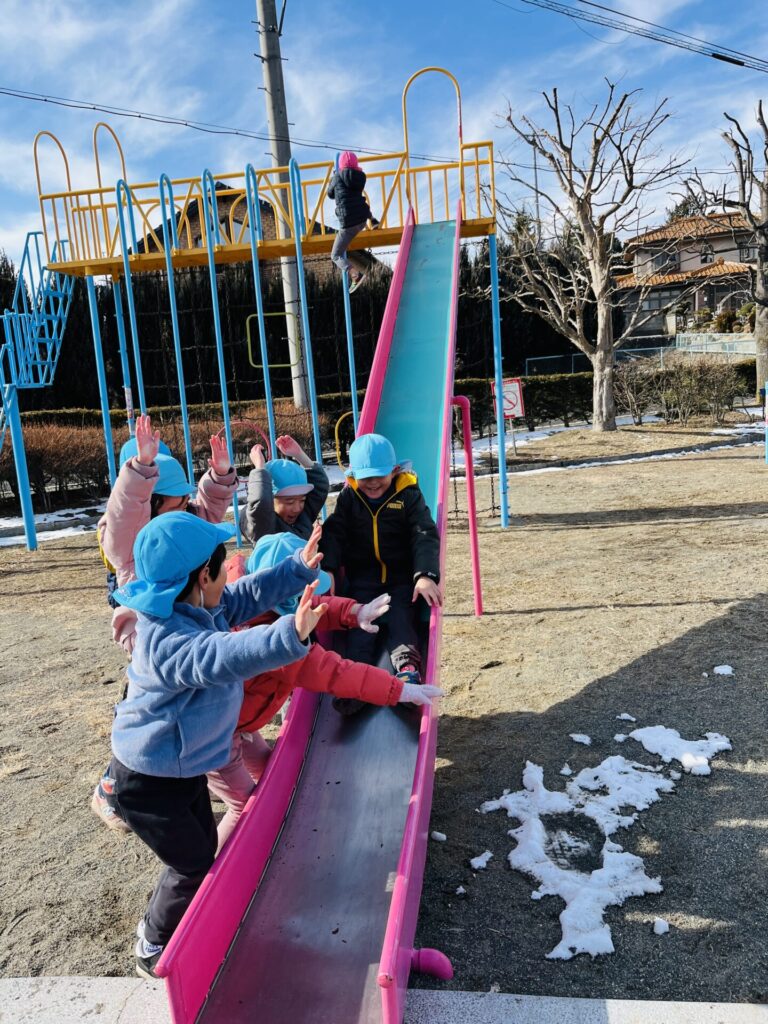
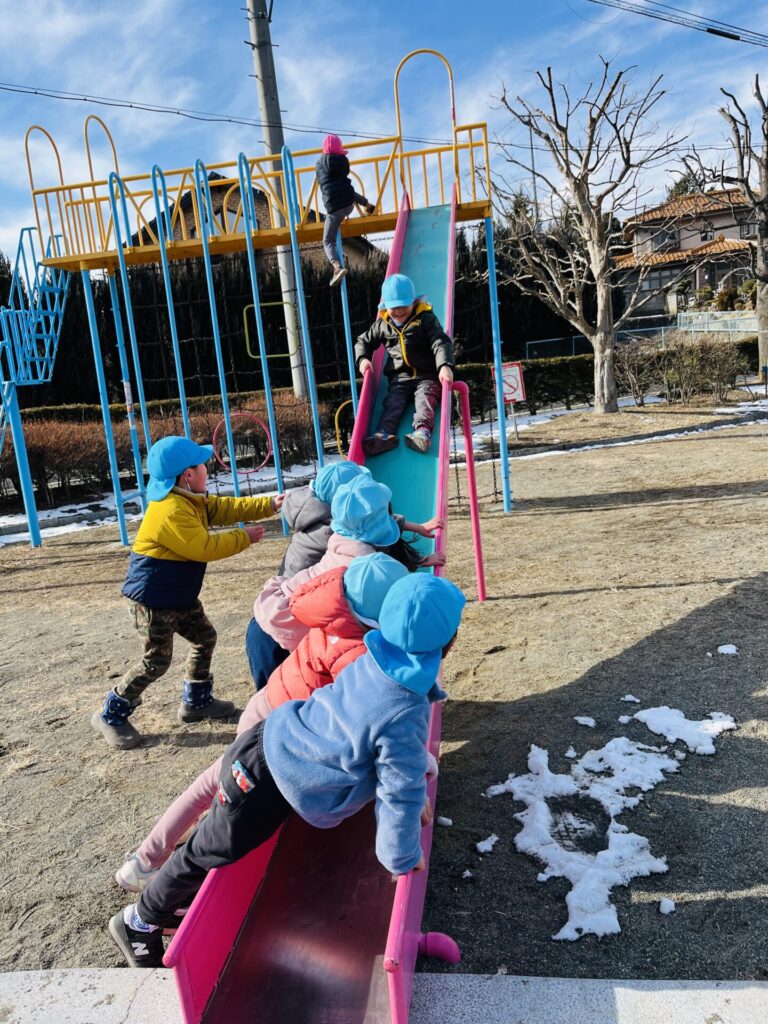

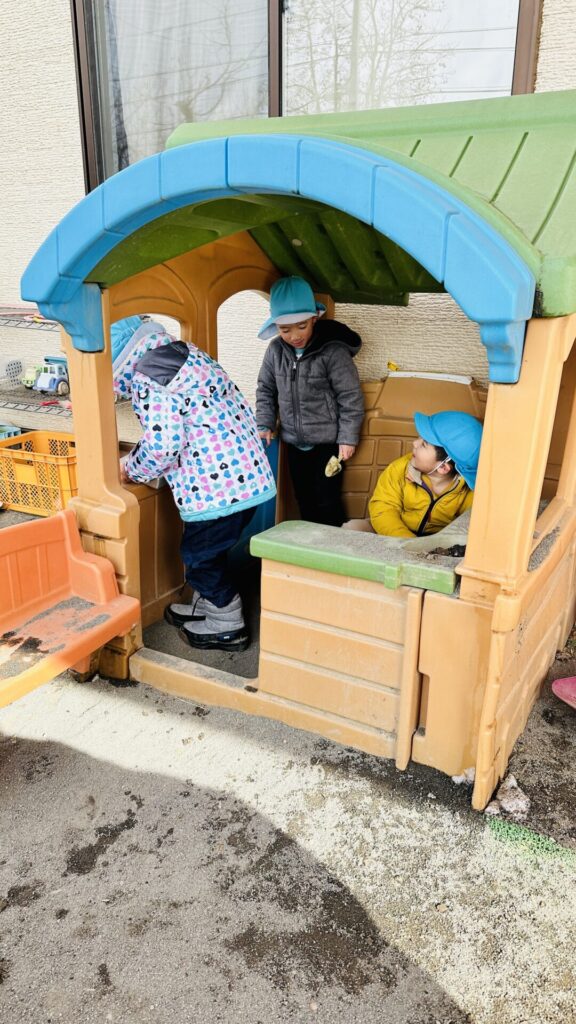

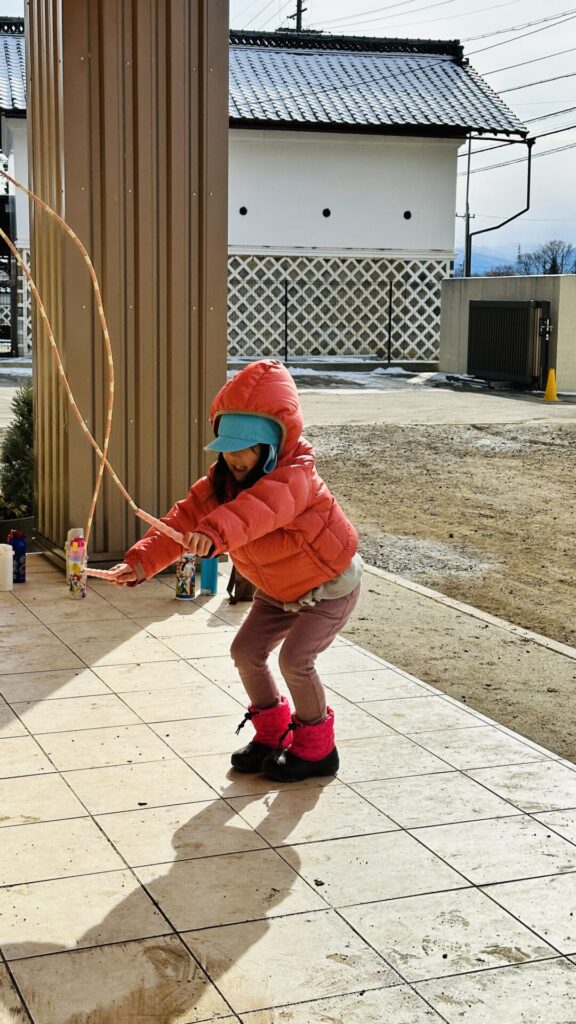
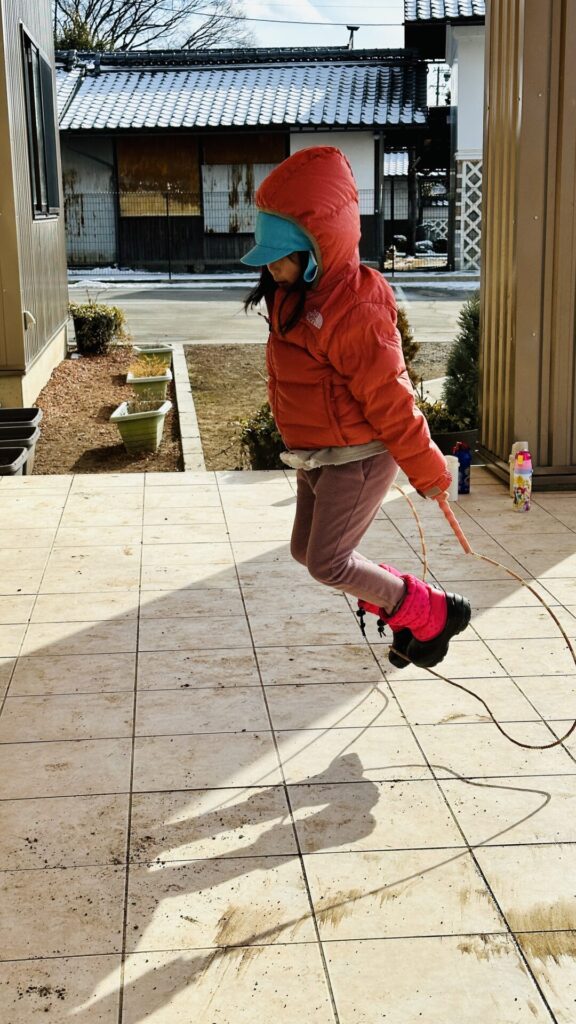
We set up a listening center where the children can take turns listening to stories on EPIC, a digital reading platform that is widely used in schools in the United States. Each child gets 5 minutes to choose the stories they want to listen to during free choice time. Most of them have been utilizing it and are loving the variety of books they can listen to. Other times, the children enjoy making crafts or playing a game or two with a friend.
米国の学校で広く使用されているデジタル読書プラットフォームである EPIC を子ども達に紹介しました。子ども達が交代でストーリーを聞くことができるリスニングセンターを設置しました。フリープレーの時間に、自分が聞きたいストーリーを選び、5分間リスニングできます。ほとんどの子ども達はリスニングセンターを利用し、いろいろなストーリーを聞くことを楽しんでいます。そしてみんなは毎日工作をしたり、友達とゲームをしたりしてスクールライフを楽しんでいます。
